These are our most recommended Big Island hikes.
Of course, the title of best hikes on the Big Island of Hawaii is hard to rank, but we think these are some of the best hikes offering a diversity of scenery, difficulty, and distance for a trip the west side (Kona) of Hawaii Island.
Kealakekua Bay
A blend of history and picturesque scenery at Kealakekua Bay,
leading you to the famed Captain Cook Monument.
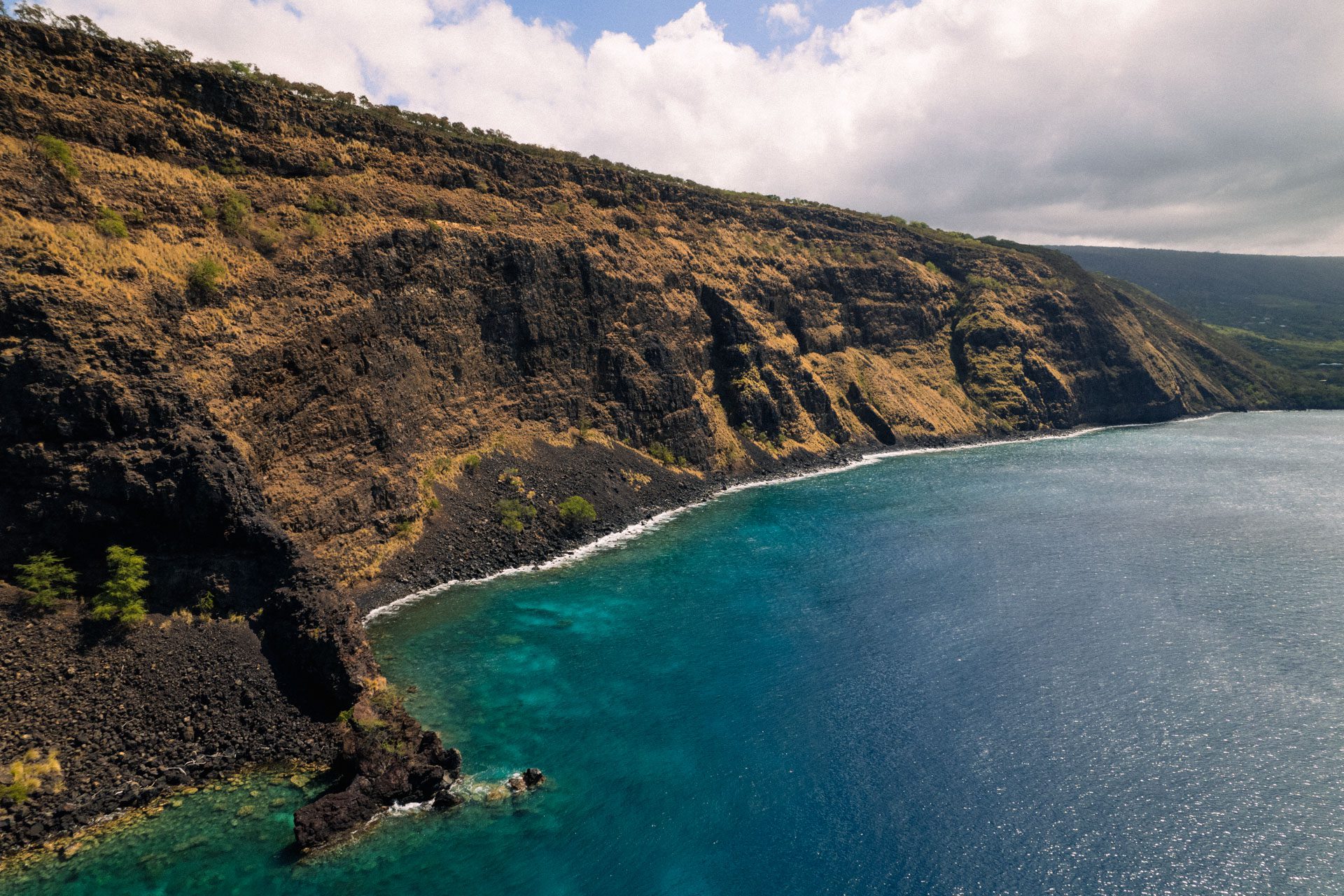
Time from Kailua-Kona 20 min. drive
Hike Distance 3.8 mi. out & back
Estimated Completion Time 3-4 hours
Difficulty Moderate
Hiking the Captain Cook Monument Trail leads you to Kealakekua Bay, weaving a path through Hawaiian history and lush landscapes. As you venture along, you’re retracing the steps of Captain James Cook. Along the hike, vibrant tropical birds and the occasional mongoose add life to your journey, while various lookout points provide breathtaking vistas of the Kohala coast.
However, the trail’s challenge lies in the ascent during the return leg, featuring a significant elevation gain (approx. 1,200 feet) that can be taxing. This Big Island hike is manageable for most, since it’s not overly technical or lengthy, but the uphill climb will definitely get your heart pumping. Bring lots of water and pace yourself. Google Map
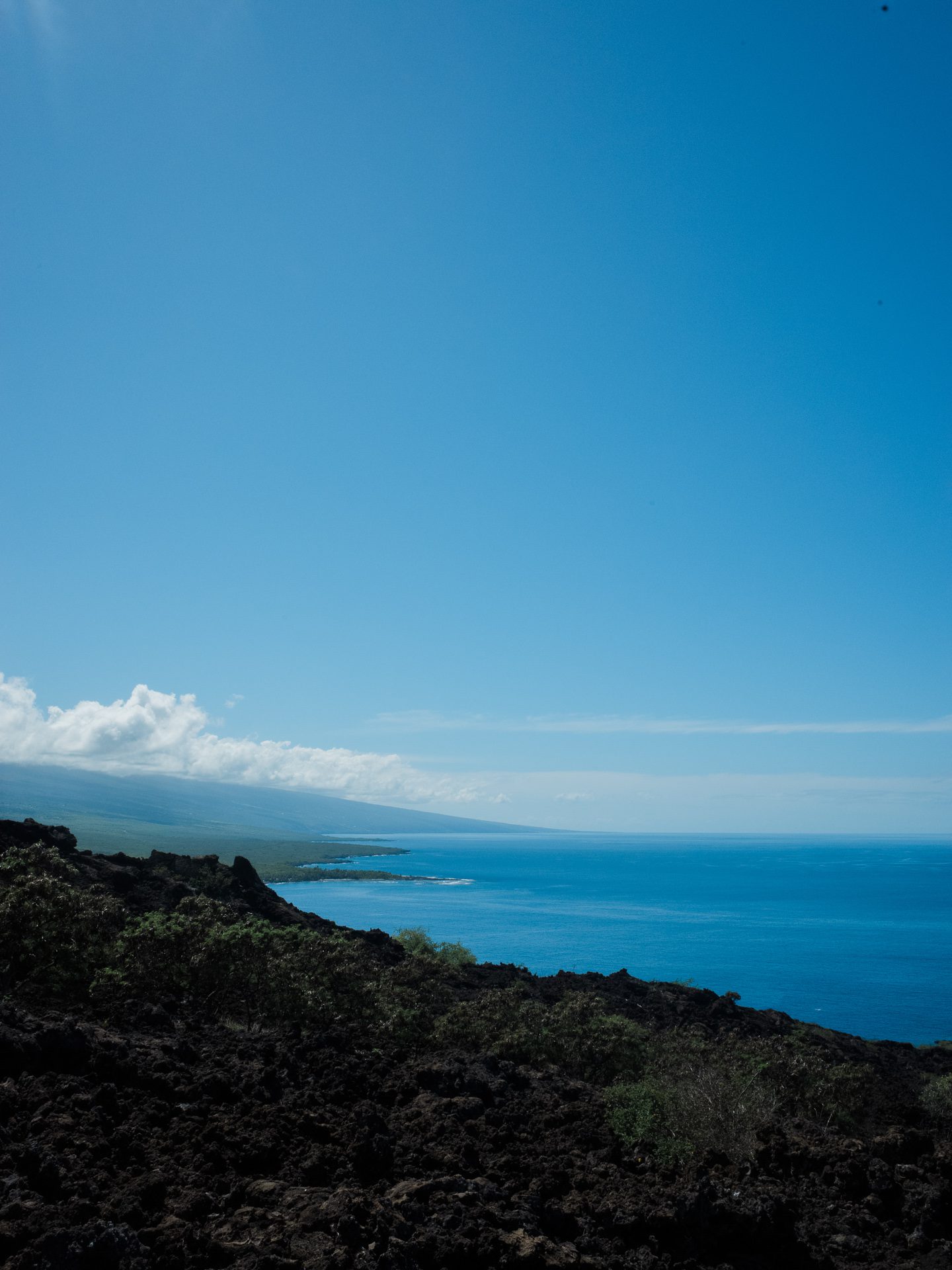
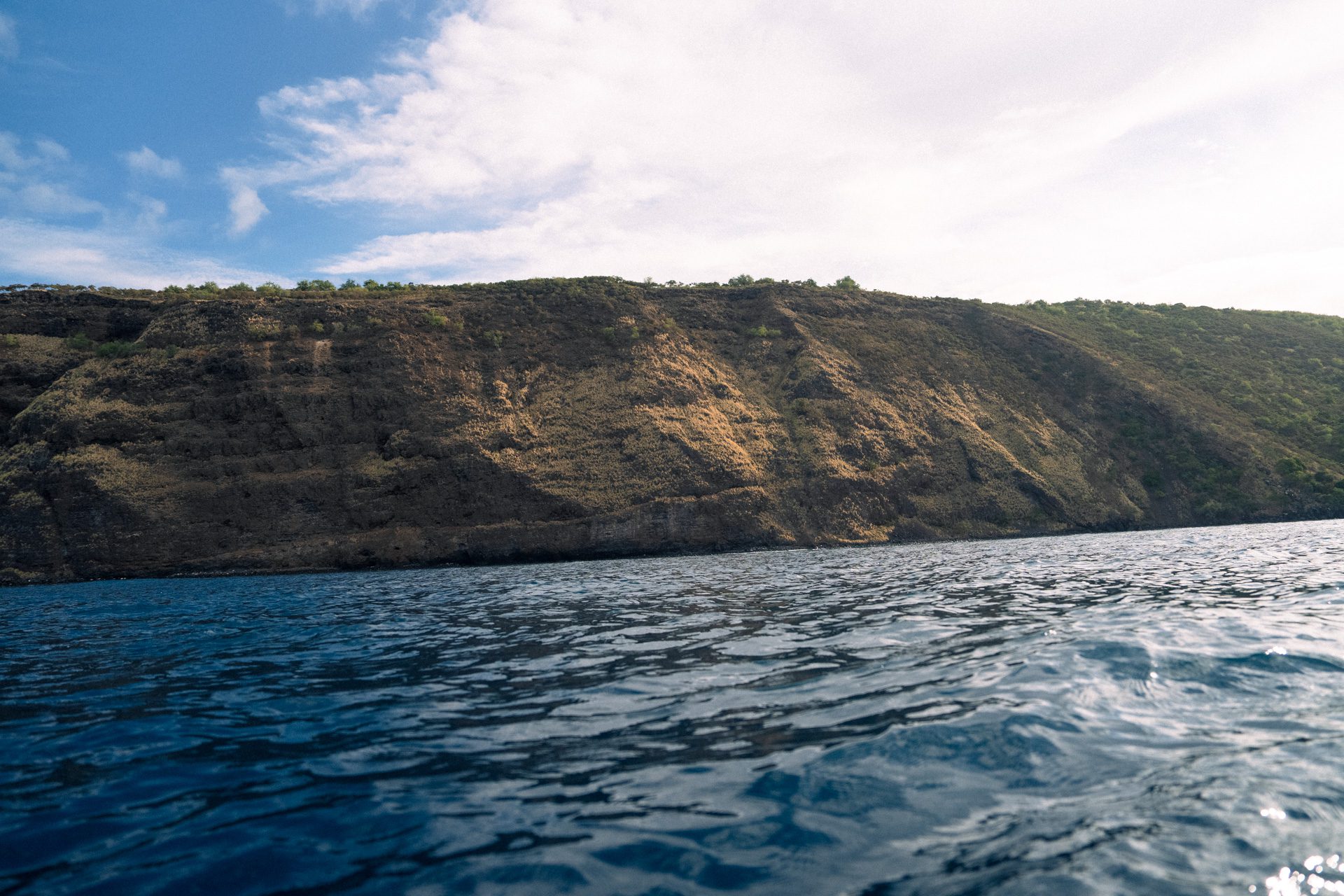

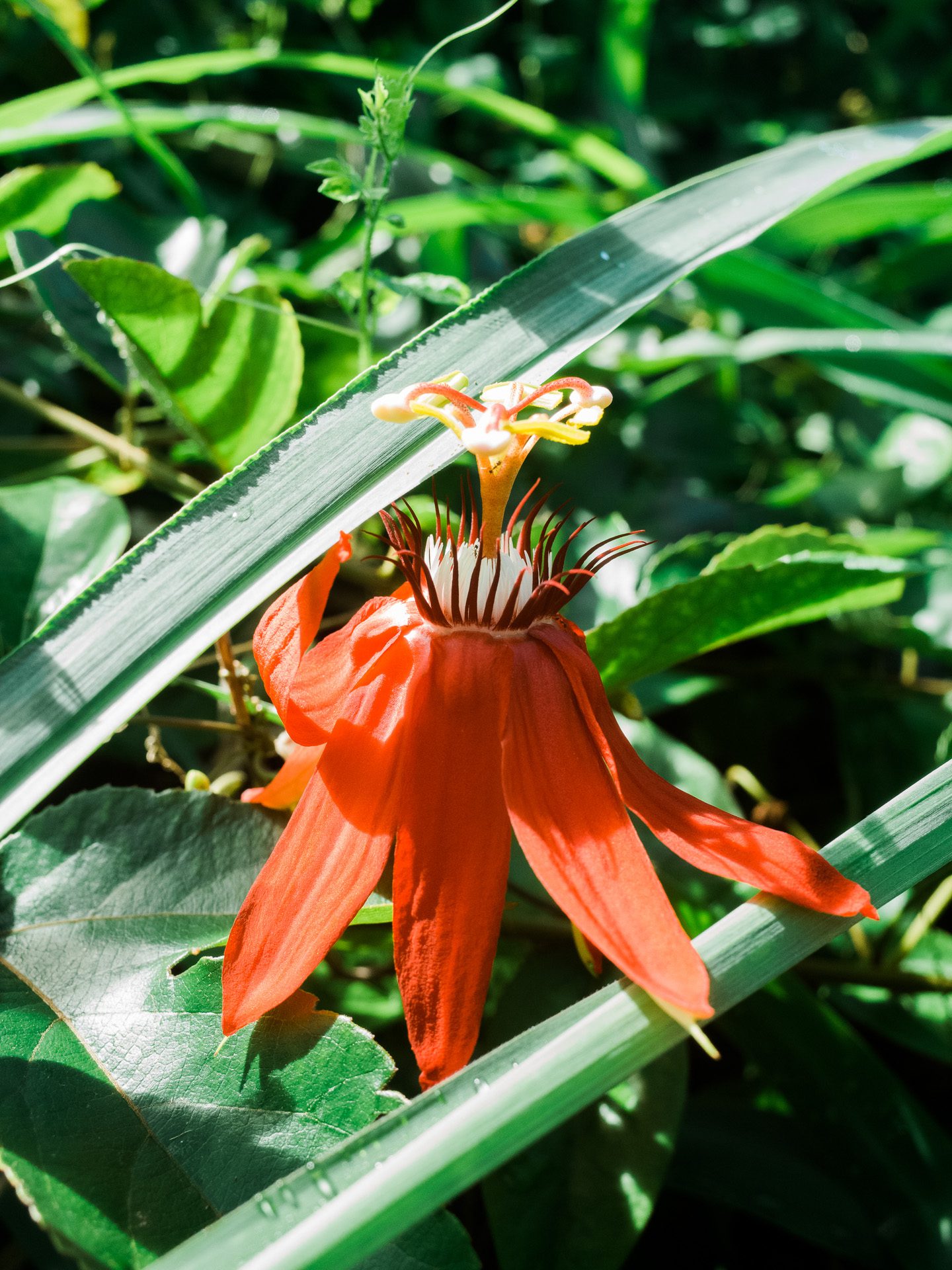
Papakolea Green Sand Beach
Marvel at the rare beauty of Papakolea Green Sand Beach,
a natural wonder set against the vast Pacific.
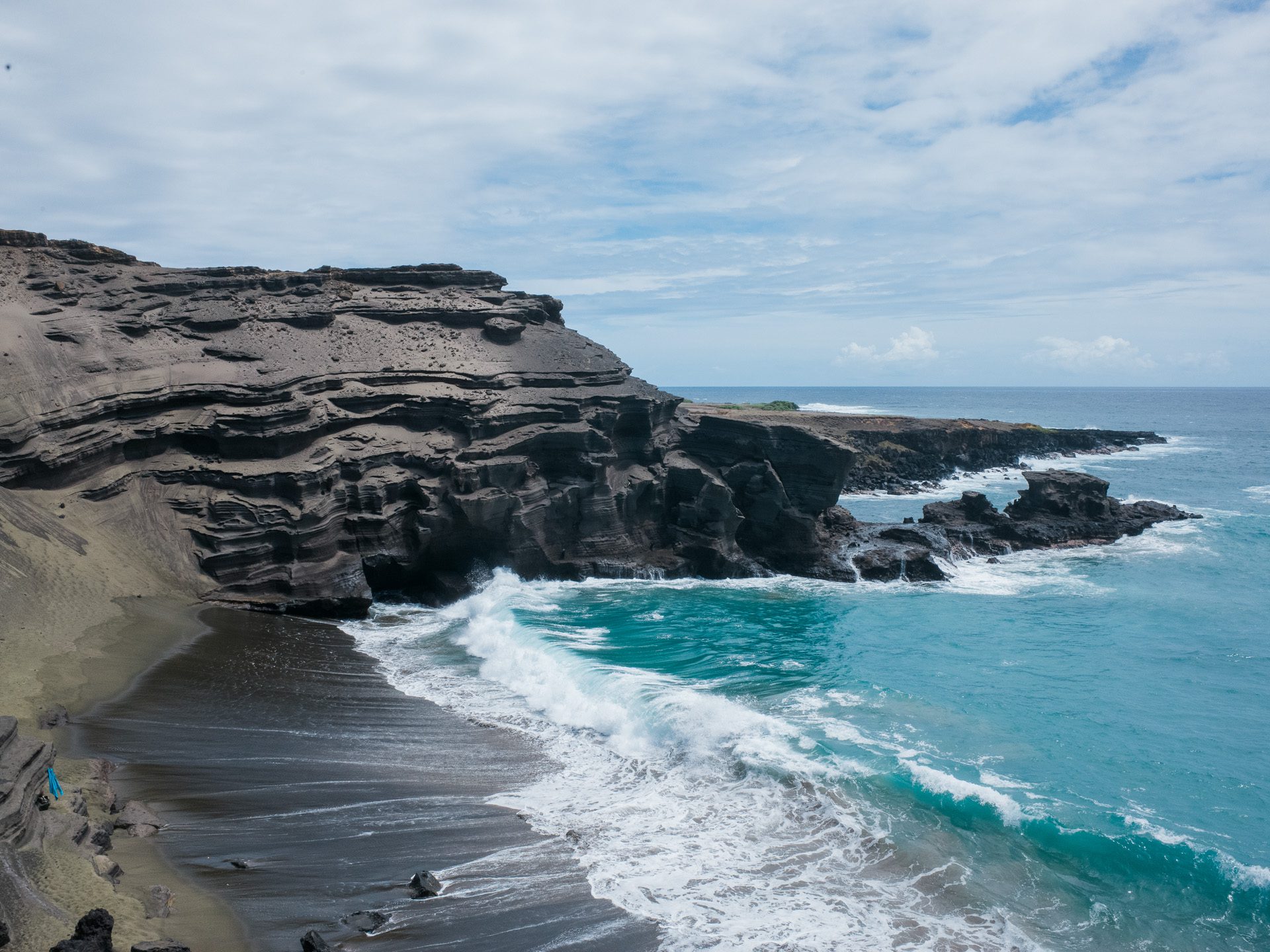
Time from Kailua-Kona 1.5 hrs. drive
Hike Distance 5.6 mi. out & back
Estimated Completion Time 3-4 hours
Difficulty Easy
The hike to the stunning Papakolea Green Sand Beach (correctly written Papakōlea) is as remarkable as the destination itself. The hiking trail is relatively flat with little elevation gain, making it an easy walk in terms of the terrain. However, the challenge here comes from the lack of shade and the hot Hawaiian Island sun beating down. Make sure to bring plenty of water and sun protection to stay hydrated and safe.
As you traverse this open landscape, the expansive views give a sense of isolation and connection with the raw beauty of the island. The trail provides glimpses of the rugged southern coastline of the Big Island, offering a different perspective of its natural charm. When you finally reach the beach, the unique green hue of the sand – a result of olivine crystals from volcanic eruptions – creates a stunning and rare sight against the backdrop of the blue Pacific. You’ll see why this is definitely one of the best Big Island hikes. Google Map
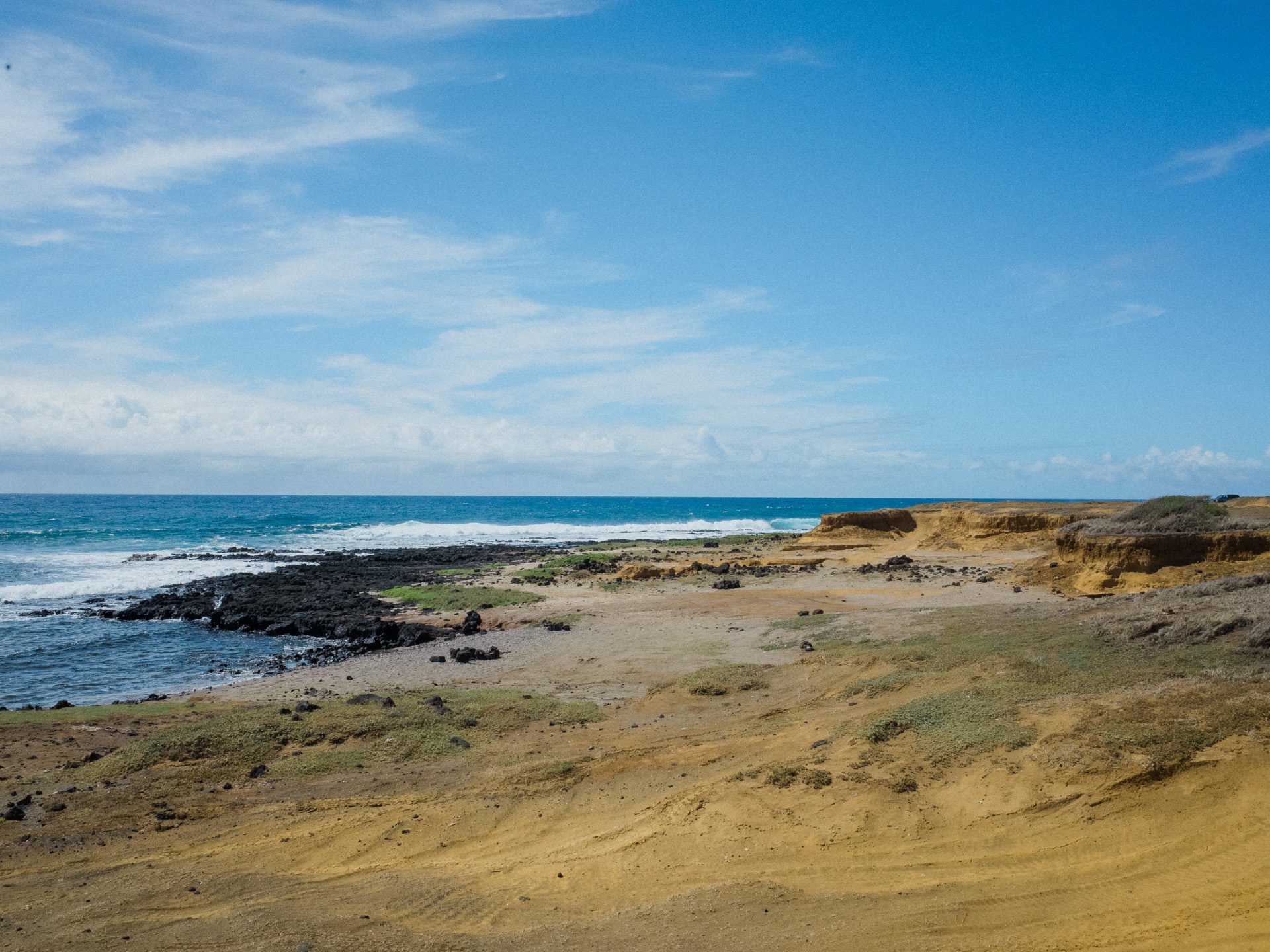
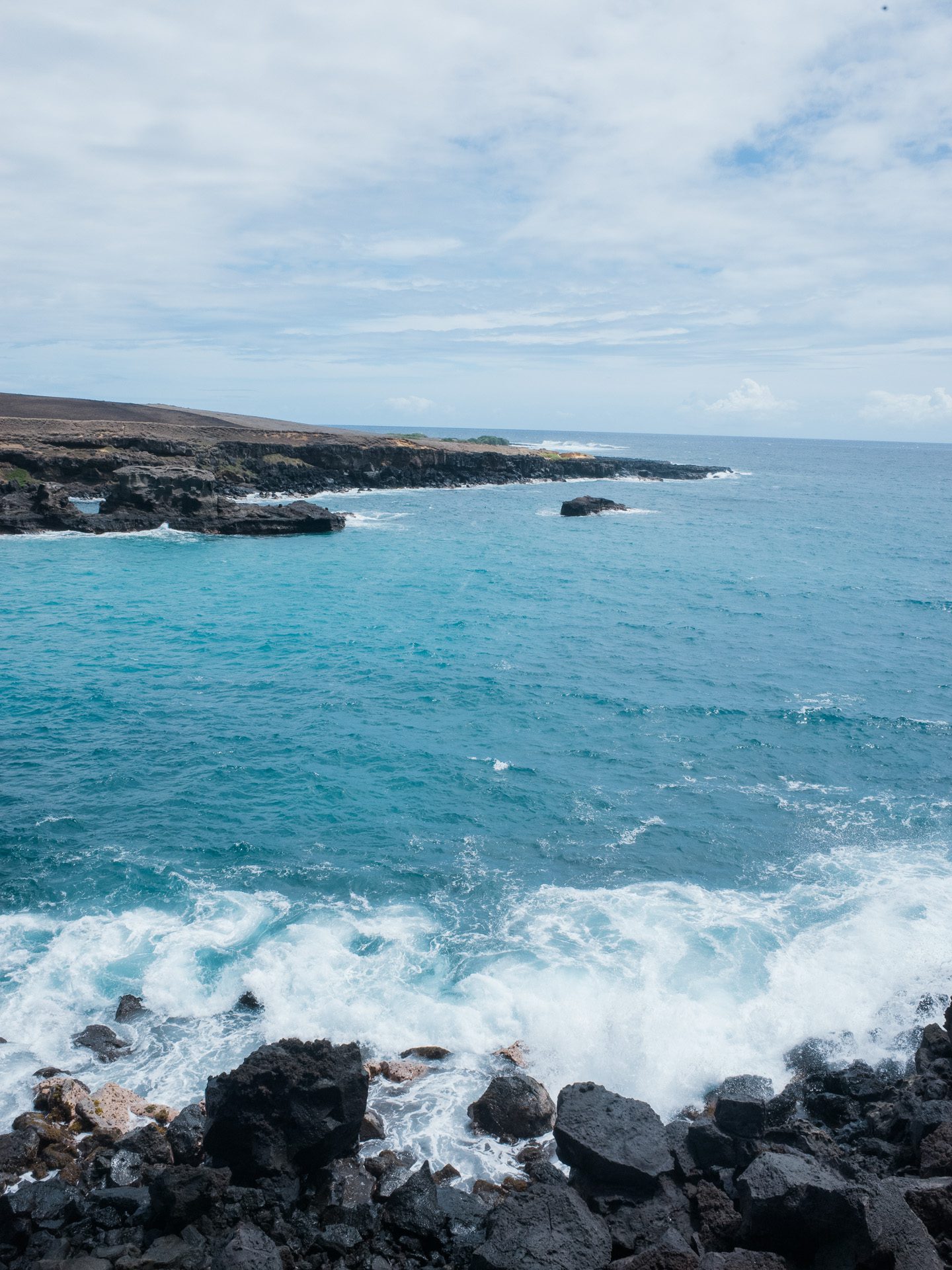
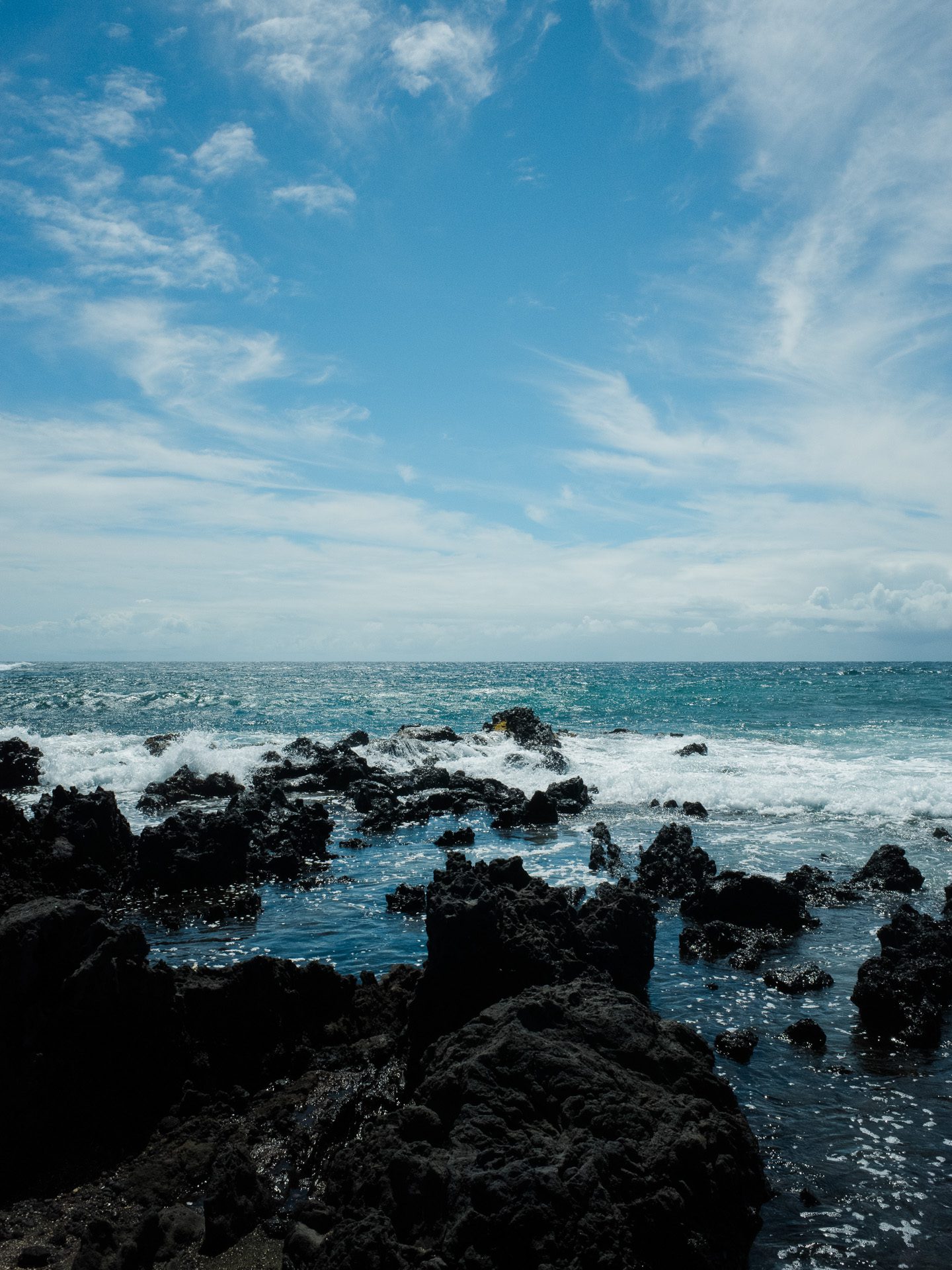
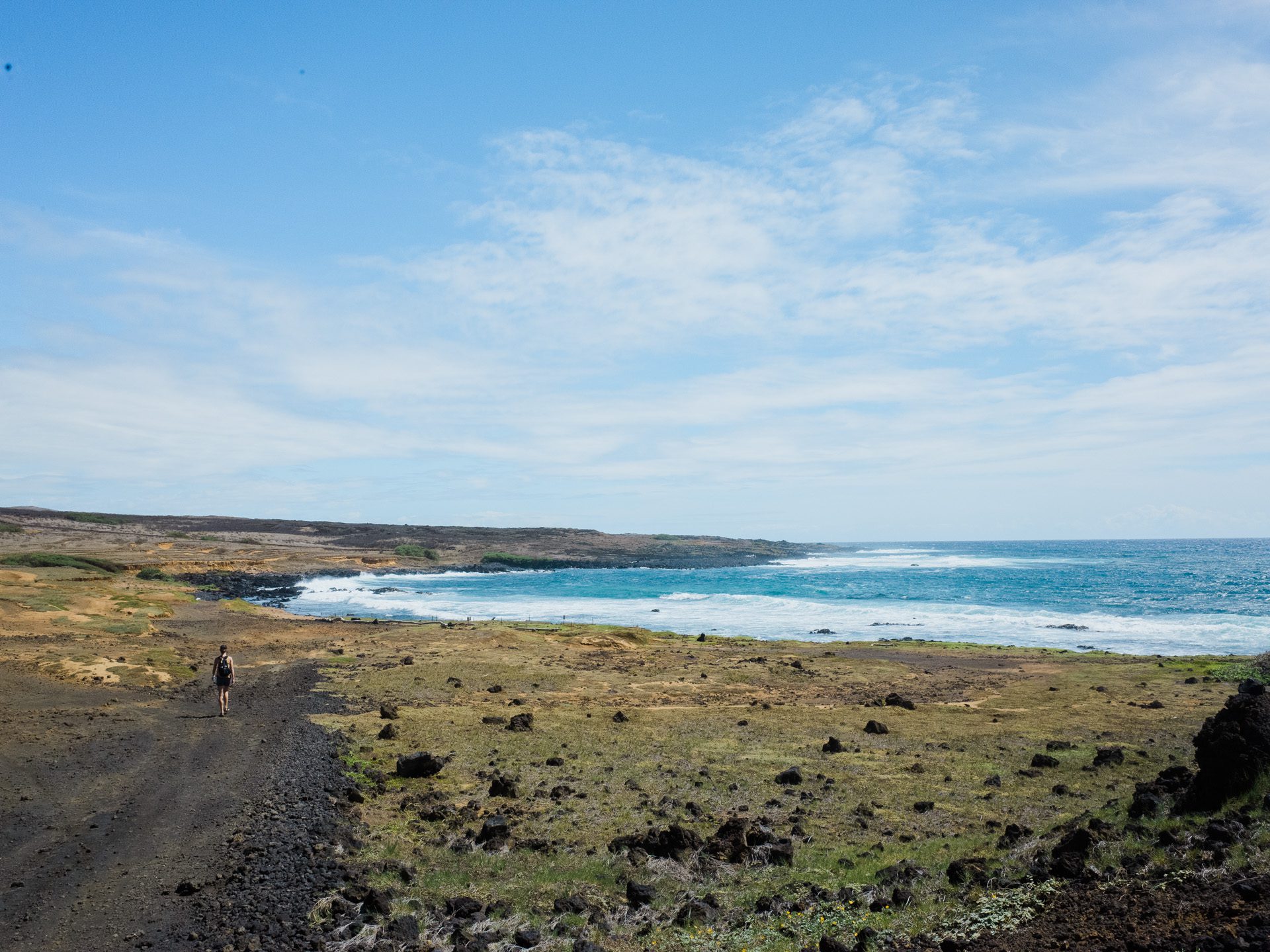
A worthwhile detour to the Southernmost point in the United States.
Should you have the time, we suggest taking a small detour down South Point Road on your way back from Papakolea Green Sand Beach. You’ll be presented with great photo opportunities in South Point with cliffs and other notable sites. Plus, isn’t it just cool to say you’ve been to the southernmost point in the entire United States? Google Map
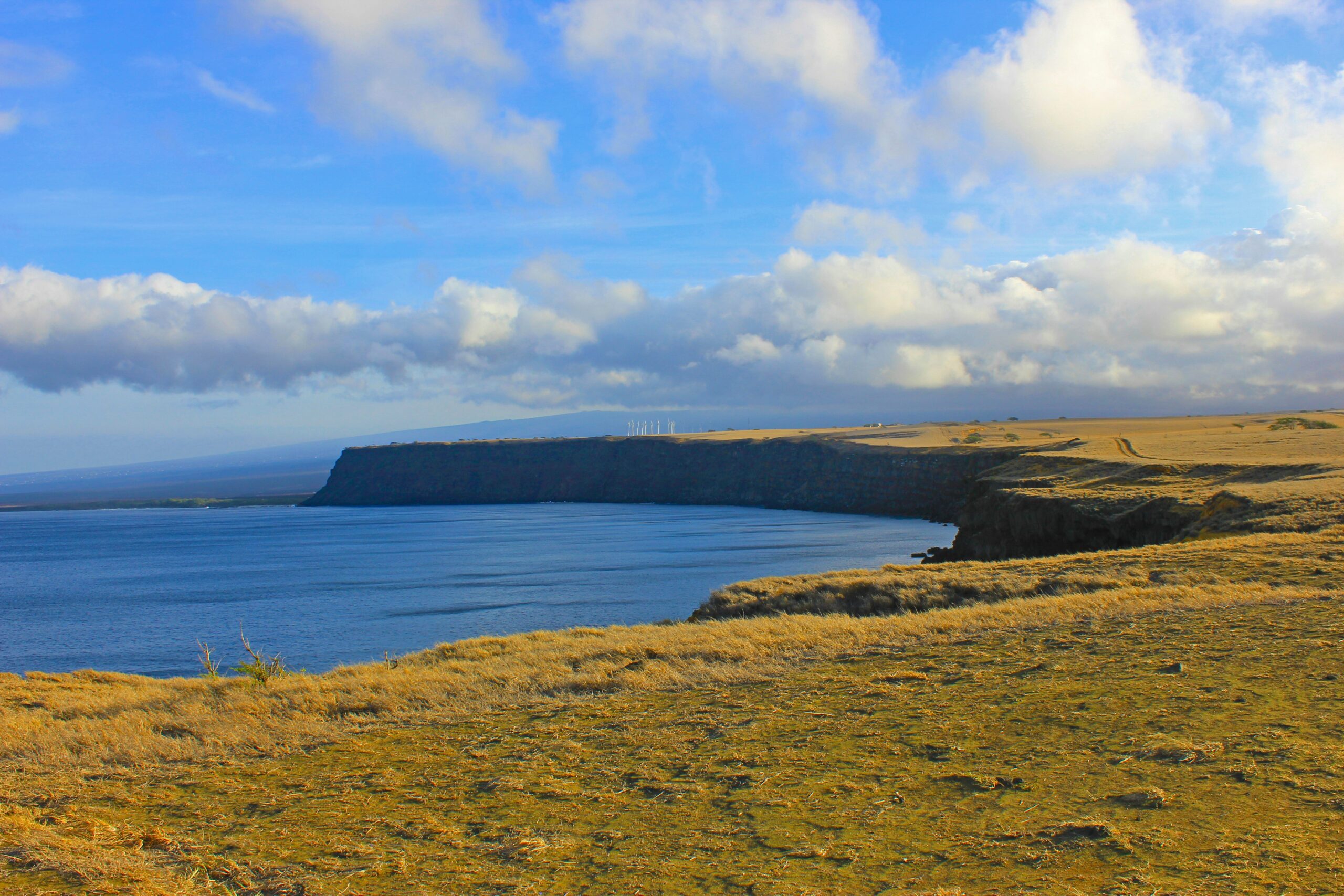

Kīlauea Iki Trail in Hawaii Volcanoes National Park
Experience the dramatic landscape of the Kīlauea Iki Trail,
a journey through rainforests and volcanic terrain.
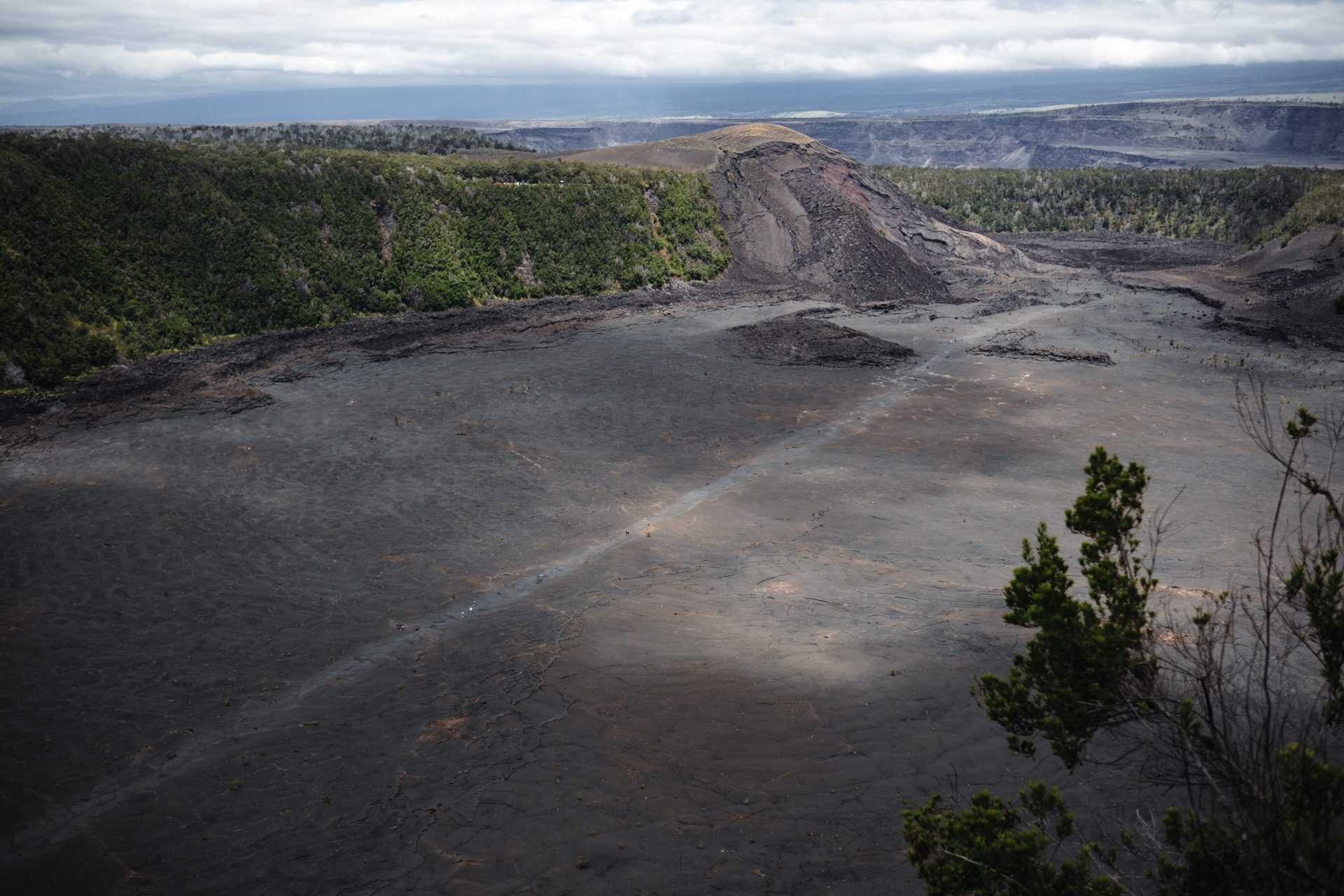
Time from Kailua-Kona 2 hrs. drive
Hike Distance 3.2 mile loop
Estimated Completion Time 2-3 hours
Difficulty Easy
On your way to the Kīlauea Iki Trail inside of Hawaii Volcanoes National Park, the drive south from Kona unfolds through quaint towns and diverse landscapes, from verdant forests to stark lava fields. The trail offers an accessible hike through a lush rainforest, leading to the Kīlauea Iki crater, a site of a 1959 eruption. This area showcases the island’s volcanic activity with steaming vents and a solidified lava lake, providing a unique geological perspective.
The park itself, a symbol of Hawaii’s active volcanic nature, allows hikers to witness the creation and transformation of the island’s landscape. The trail’s ease makes it suitable for a wide range of hikers, inviting everyone to explore the unique features of Volcanoes National Park. Google Map

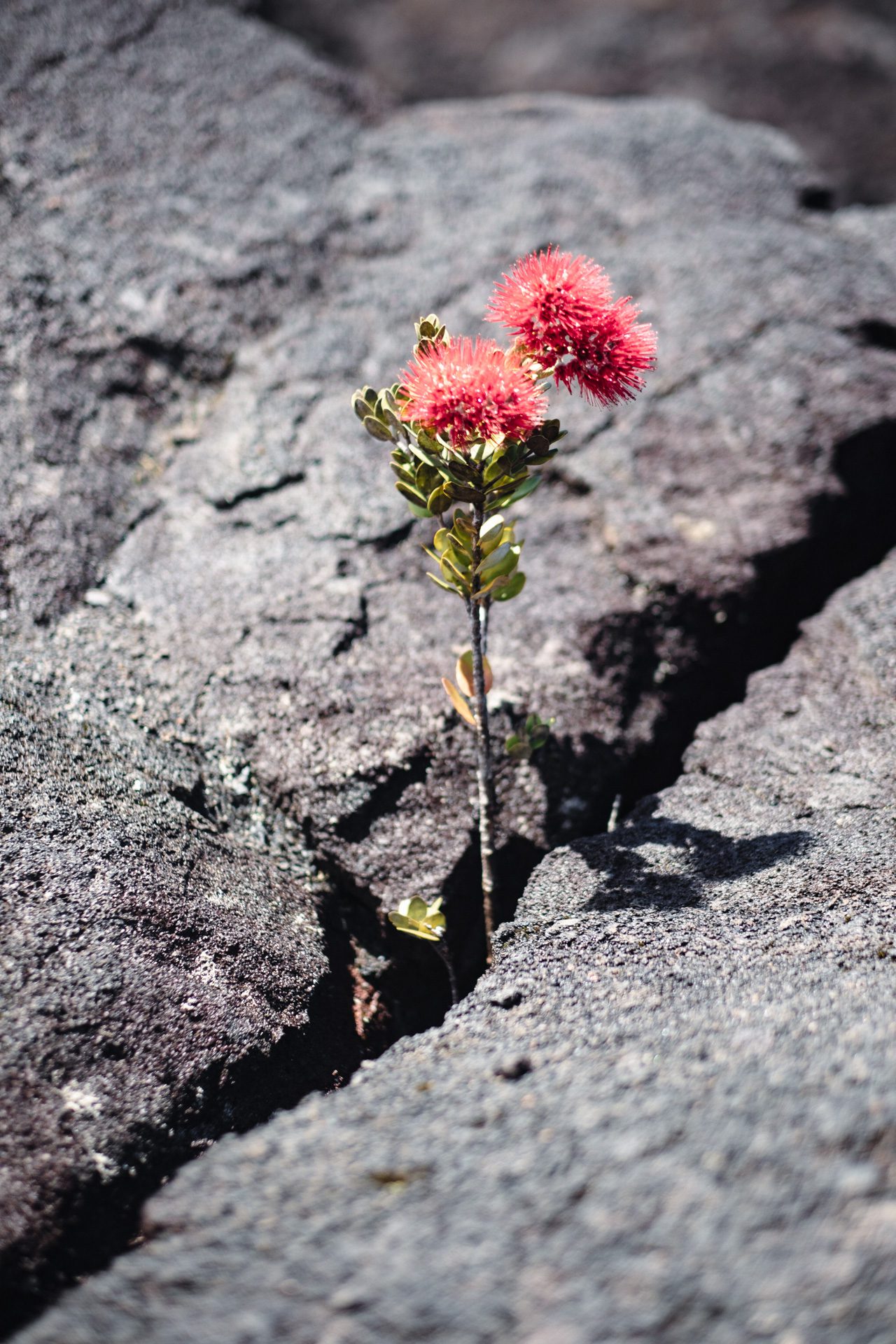
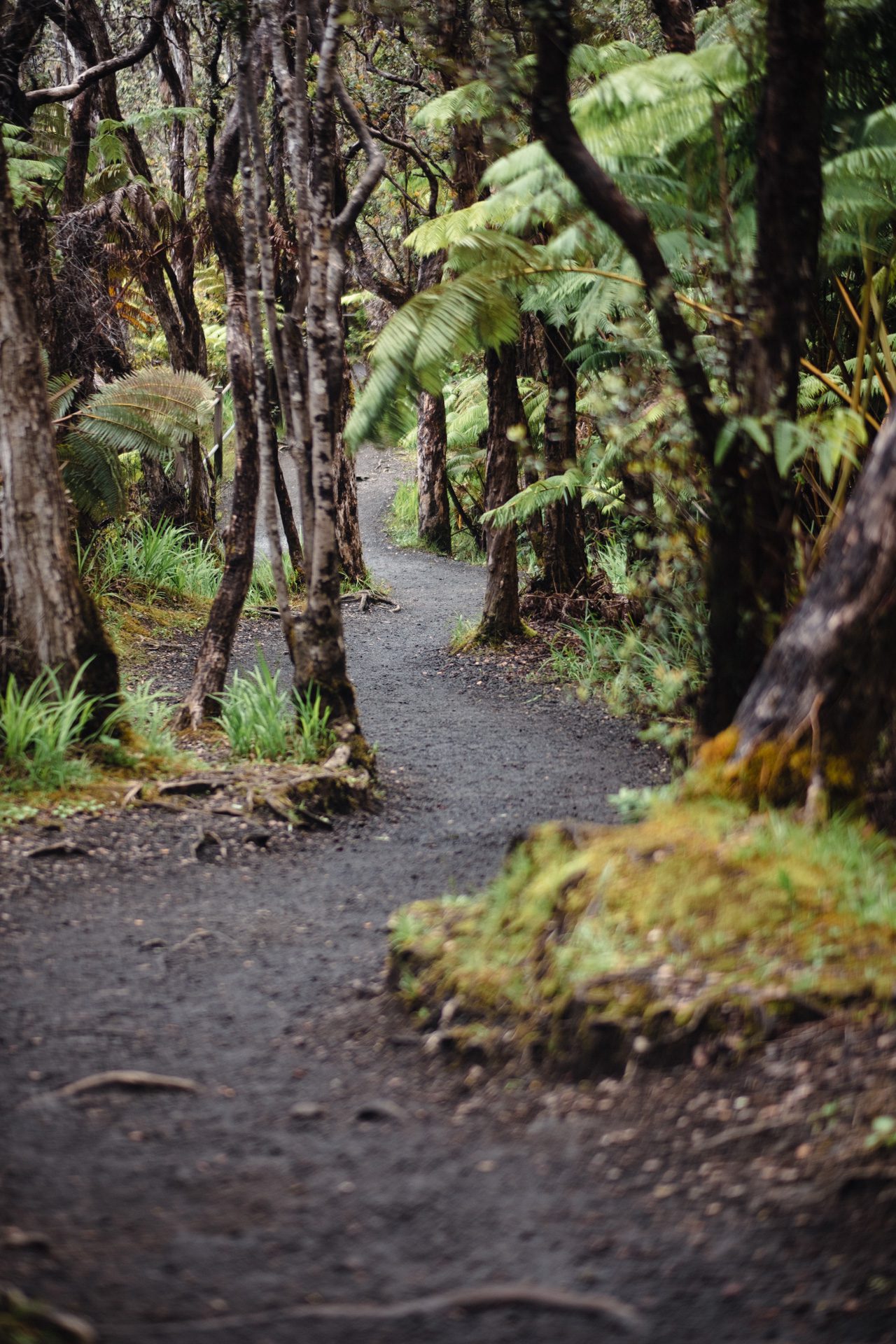
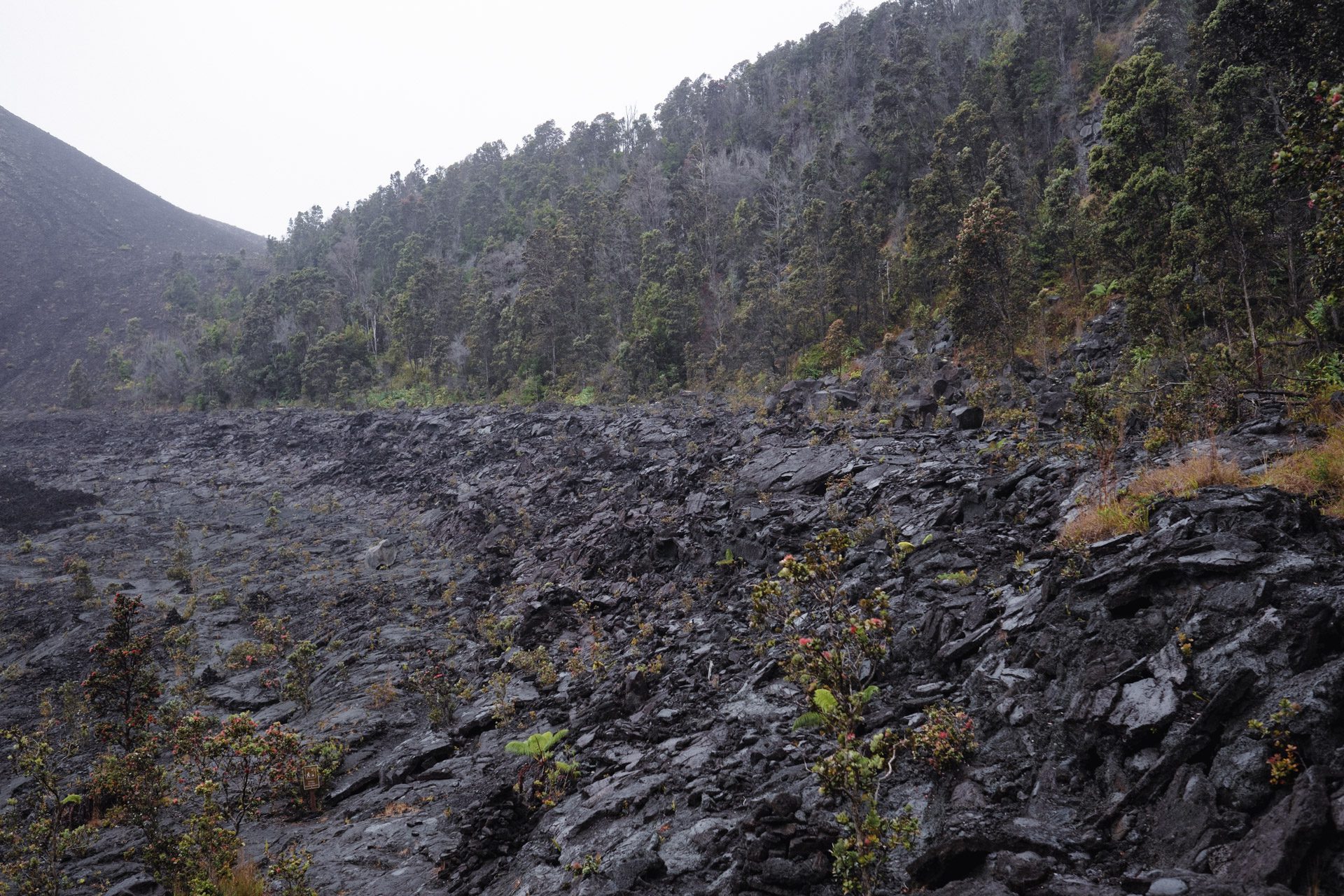
Nāpau Trail in Hawaii Volcanoes National Park
Embark on the Napau Trail for an immersive all-day experience in Hawaii’s dynamic volcanic landscape.
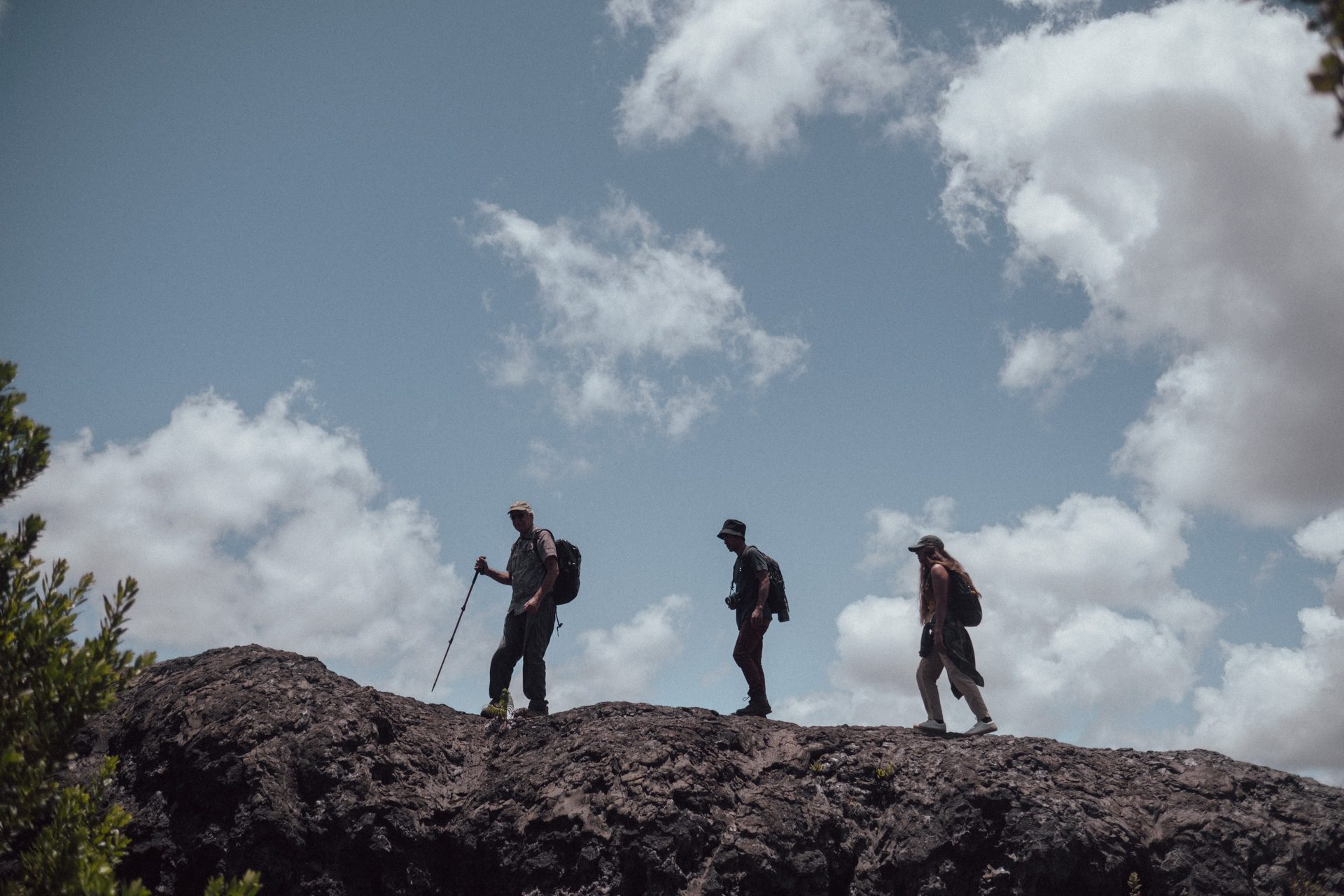
Time from Kailua-Kona 2 hrs. drive
Hike Distance 11.8 mi. out and back
Estimated Completion Time 5-7 hours
Difficulty Hard
Hawaii Volcanoes National Park, home to the Napau Trail, is a testament to ecological diversity and geological marvels. The park encompasses a vast area with varying climates, from lush rainforests to arid lava fields. Venturing along the trail is like stepping into a living, breathing showcase of the Earth’s raw power.
As you begin, the lush rainforest envelops you, its dense canopy and vibrant bird calls a stark contrast to what lies ahead. As the trail progresses, the scenery undergoes a dramatic transformation. You’ll find yourself traversing across vast lava fields, where the ground tells the story of recent eruptions. Each step takes you further into the heart of the park’s volcanic activity, with the stark, barren landscape of the lava fields stretching out around you.
The trail leads to the Napau Crater, offering a view that is both desolate and captivating. Along the way, you might spot nēnē (Hawaiian geese) and other native wildlife adapted to this harsh environment. The trail’s length and the variety of terrain it covers make it a challenging yet rewarding Big Island hike, ideal for those who wish to deeply explore the diverse and dynamic nature of Hawaii’s volcanic landscape. Google Map
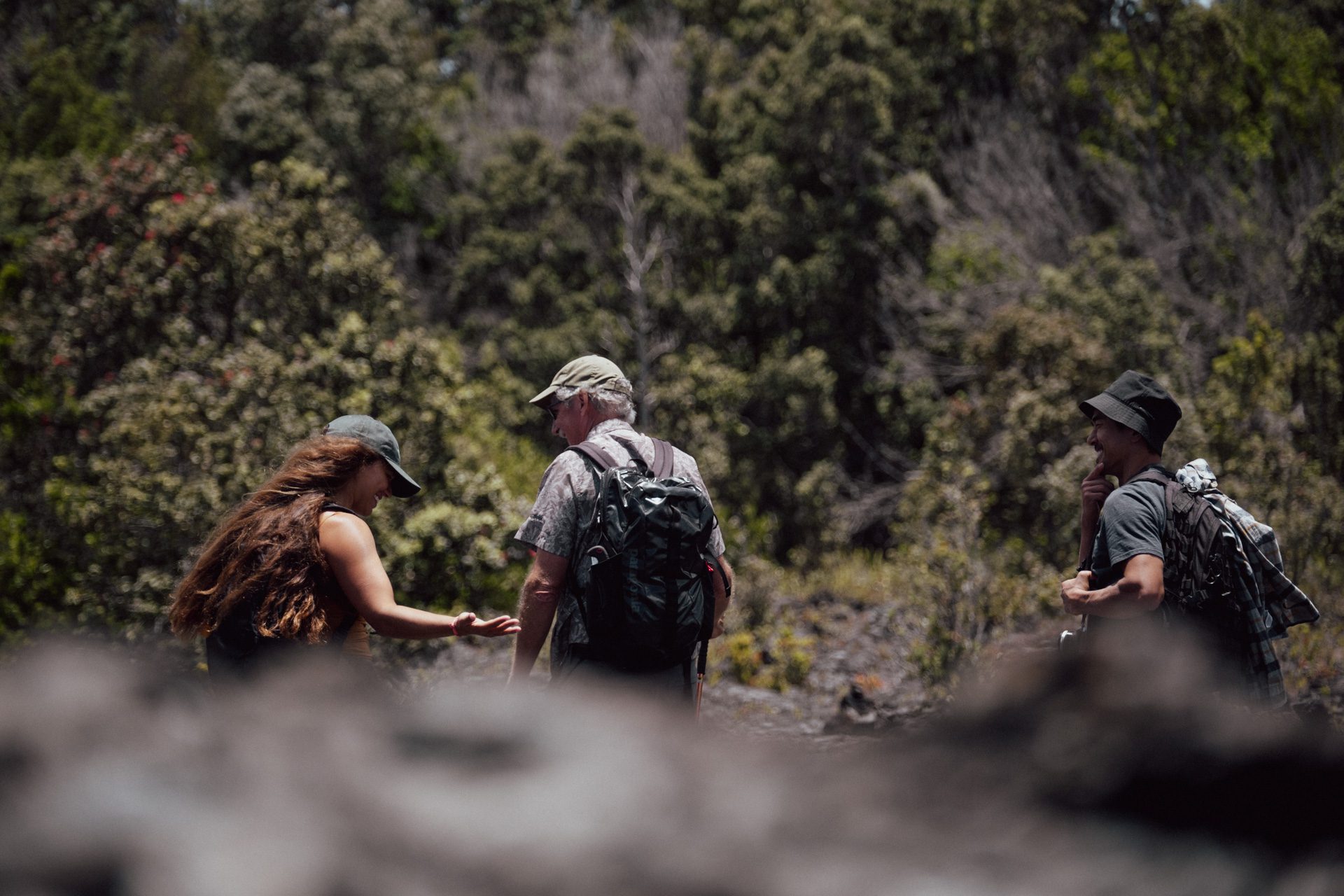
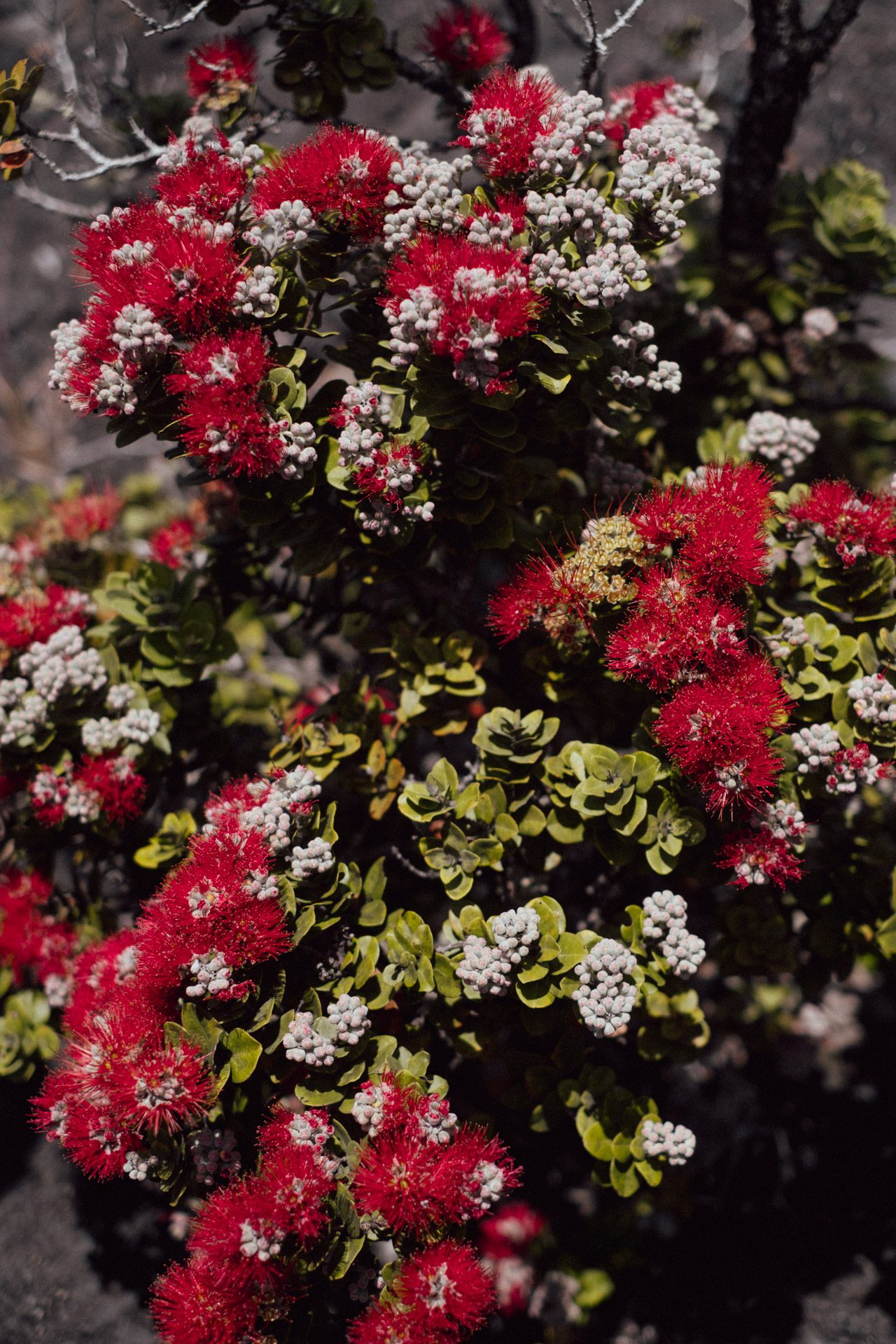
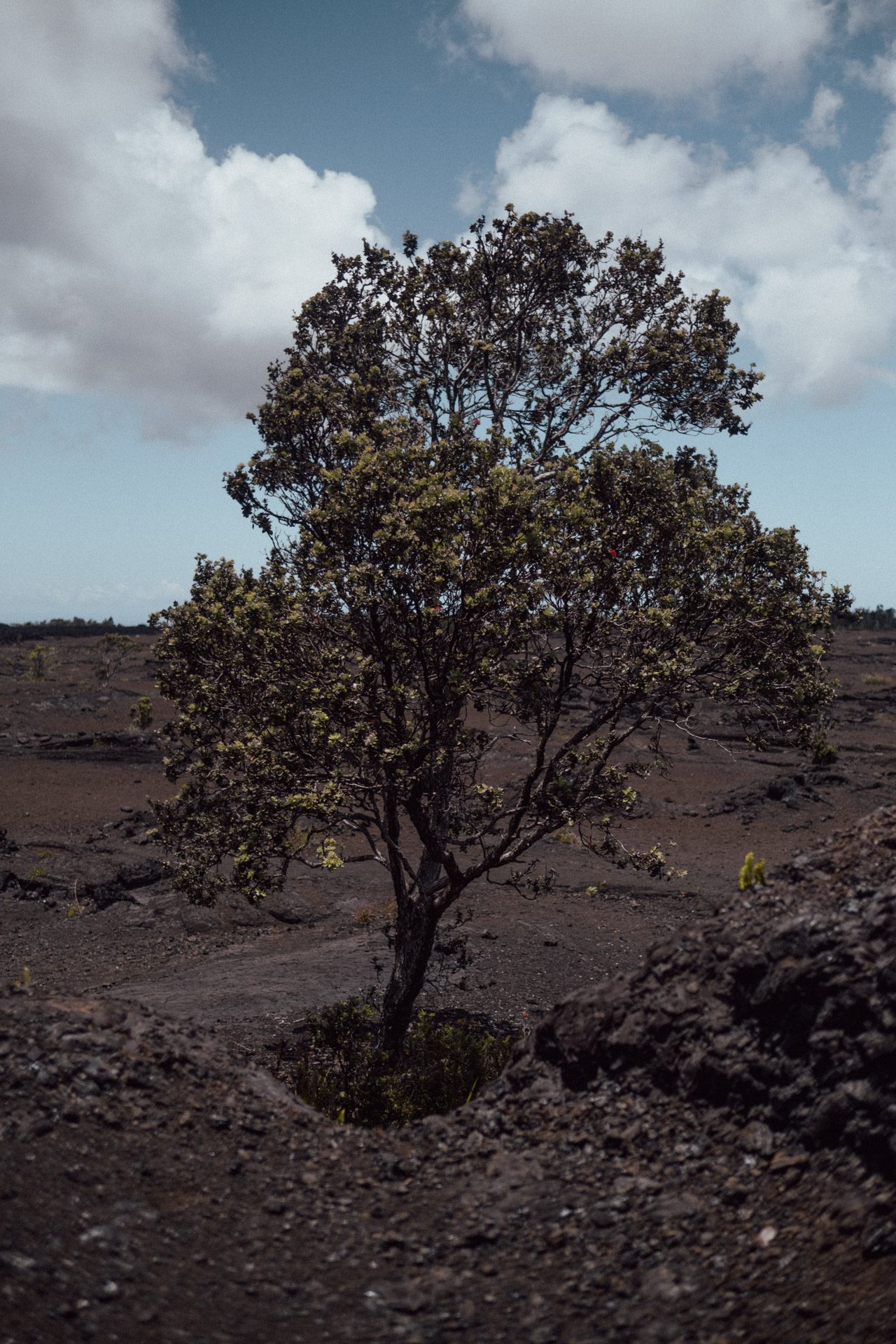
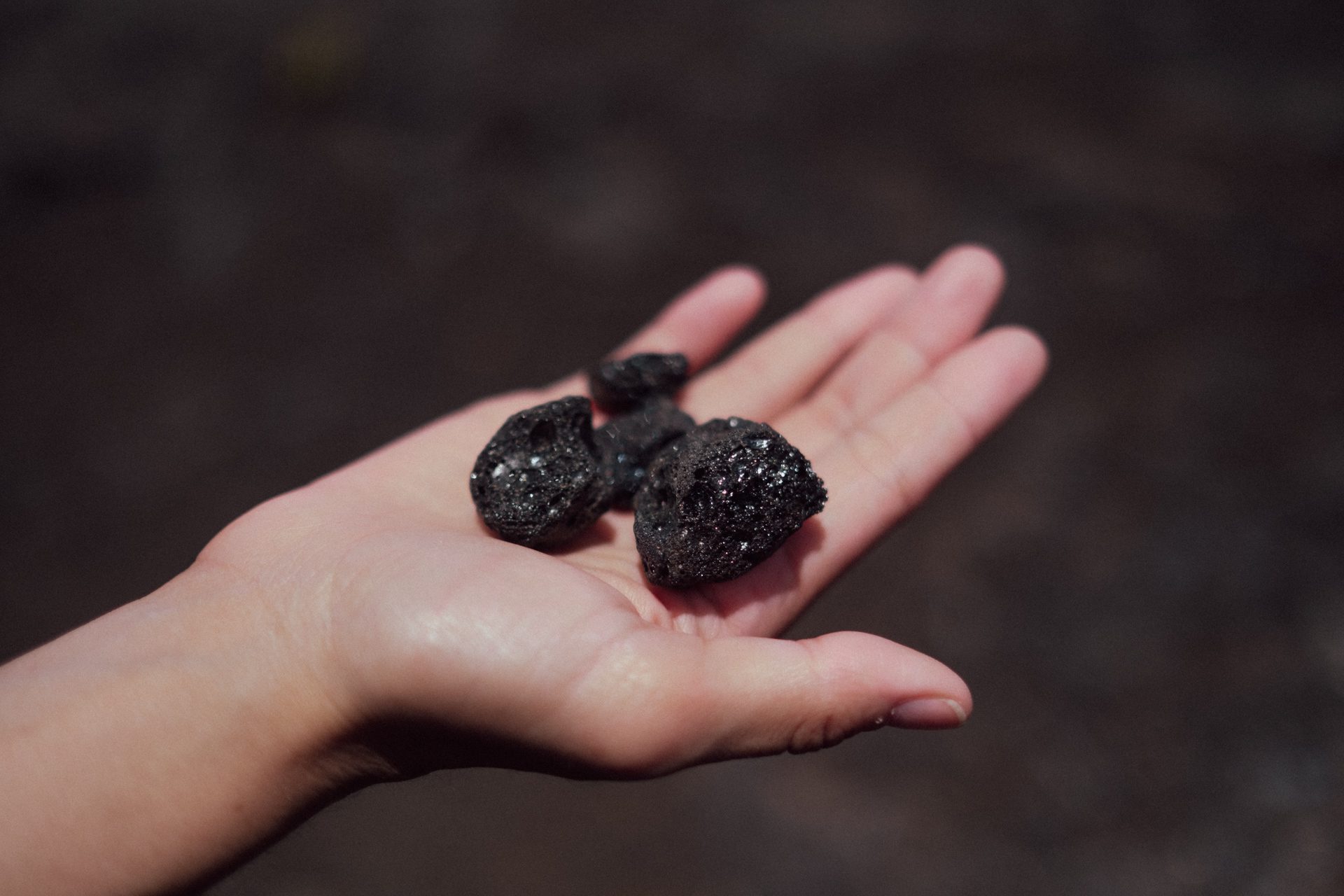
Kiholo Bay
Relax and explore at Kiholo Bay, a serene coastal trail where nature’s beauty shines.
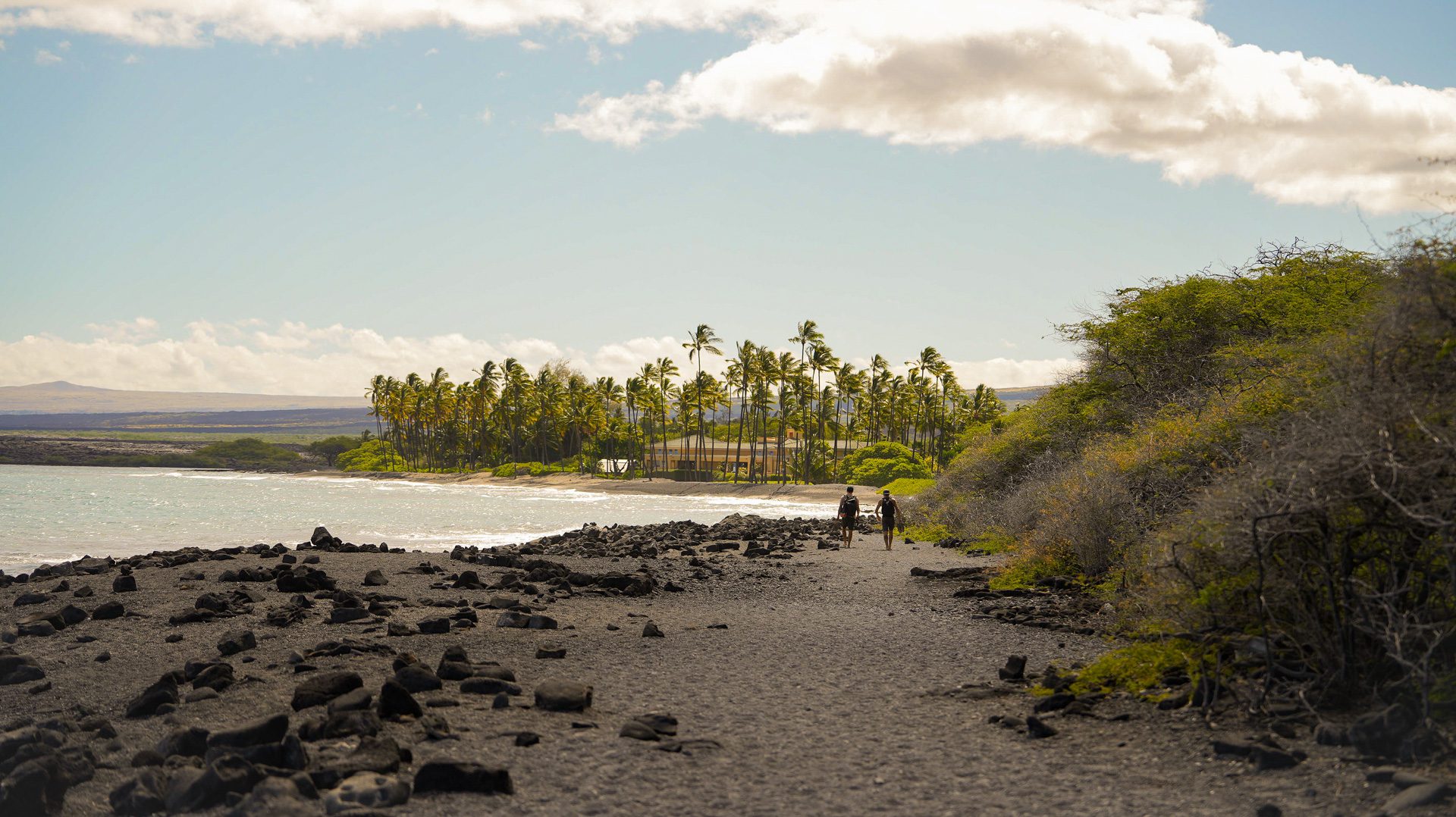
Time from Kailua-Kona 40 min. drive
Hike Distance 5.1 mi. out and back
Estimated Completion Time 2-3 hours
Difficulty Easy
Kiholo Bay is a hidden gem on the Big Island. The hike to the bay is easy and picturesque, following a coastal trail that boasts stunning views of the Pacific Ocean. A key highlight of Kiholo Bay is its remarkable lagoon, a serene body of water that reflects the sky’s ever-changing hues. This lagoon, a mix of fresh and saltwater, is an oasis for marine life and a perfect spot for swimming and snorkeling in its clear, calm waters.
A practical tip for visitors: Be sure to wear sturdy shoes suitable for walking on rocks. The terrain around the bay and lagoon area involves some rocky patches, and proper footwear will ensure a more comfortable and safe exploration.
Kiholo Bay is also renowned for its frequent sightings of Hawaiian green sea turtles who often bask on the bay’s shores or glide through the lagoon’s waters. Observing these turtles is a magical experience, offering a close-up encounter with one of Hawaii’s most beloved marine species. Remember to admire them from a distance to ensure their natural habitat is respected and preserved. Google Map
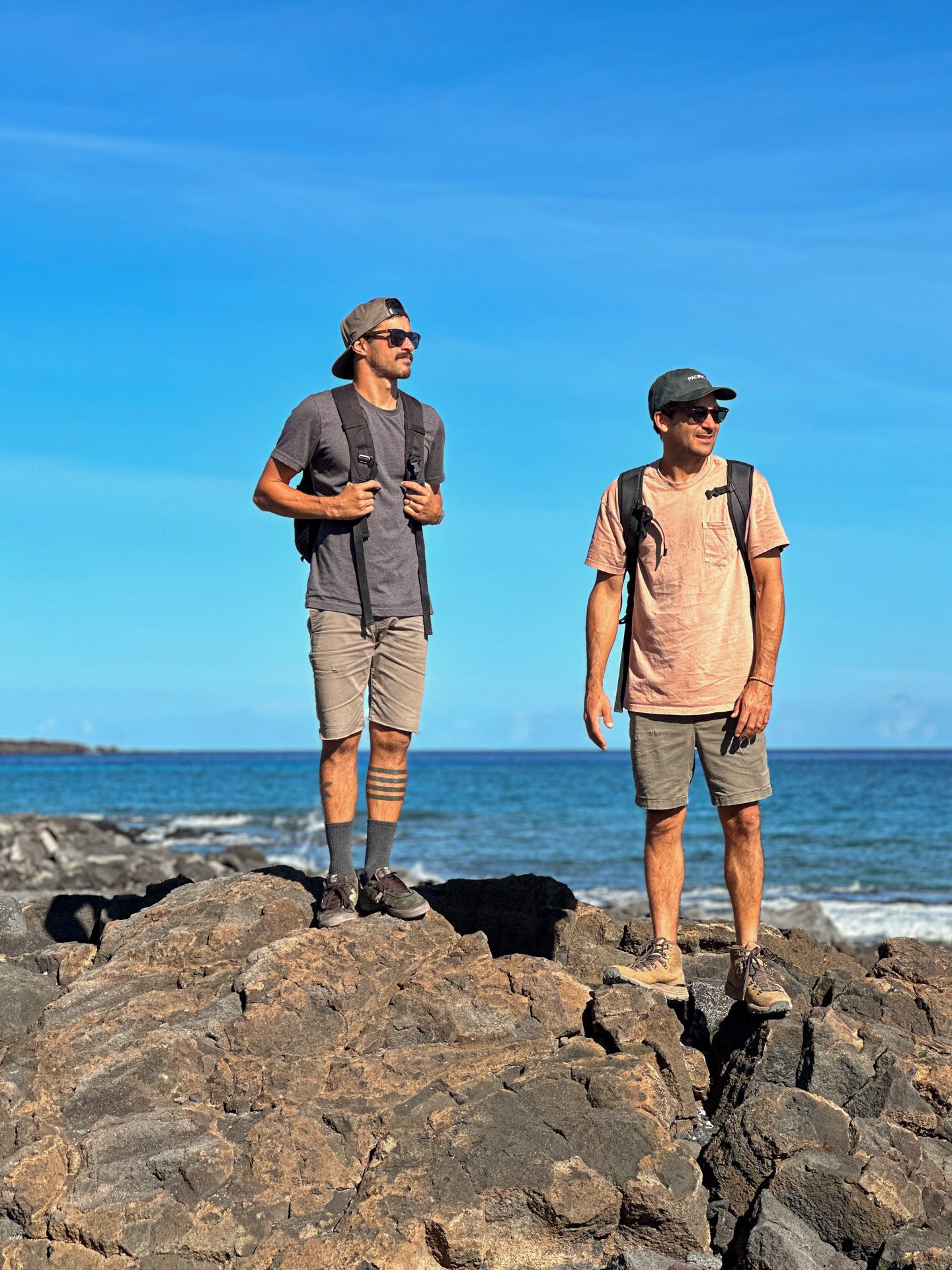
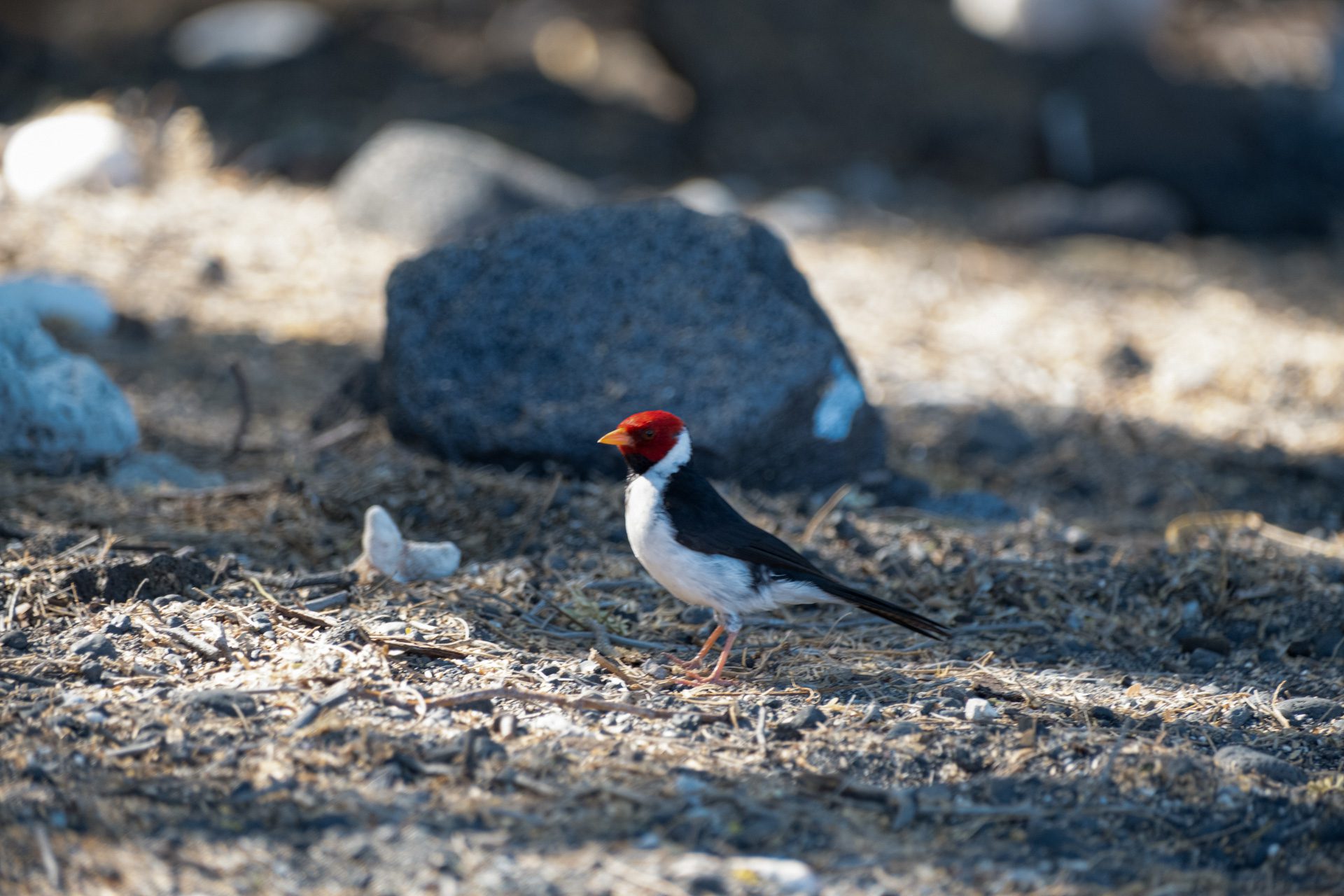
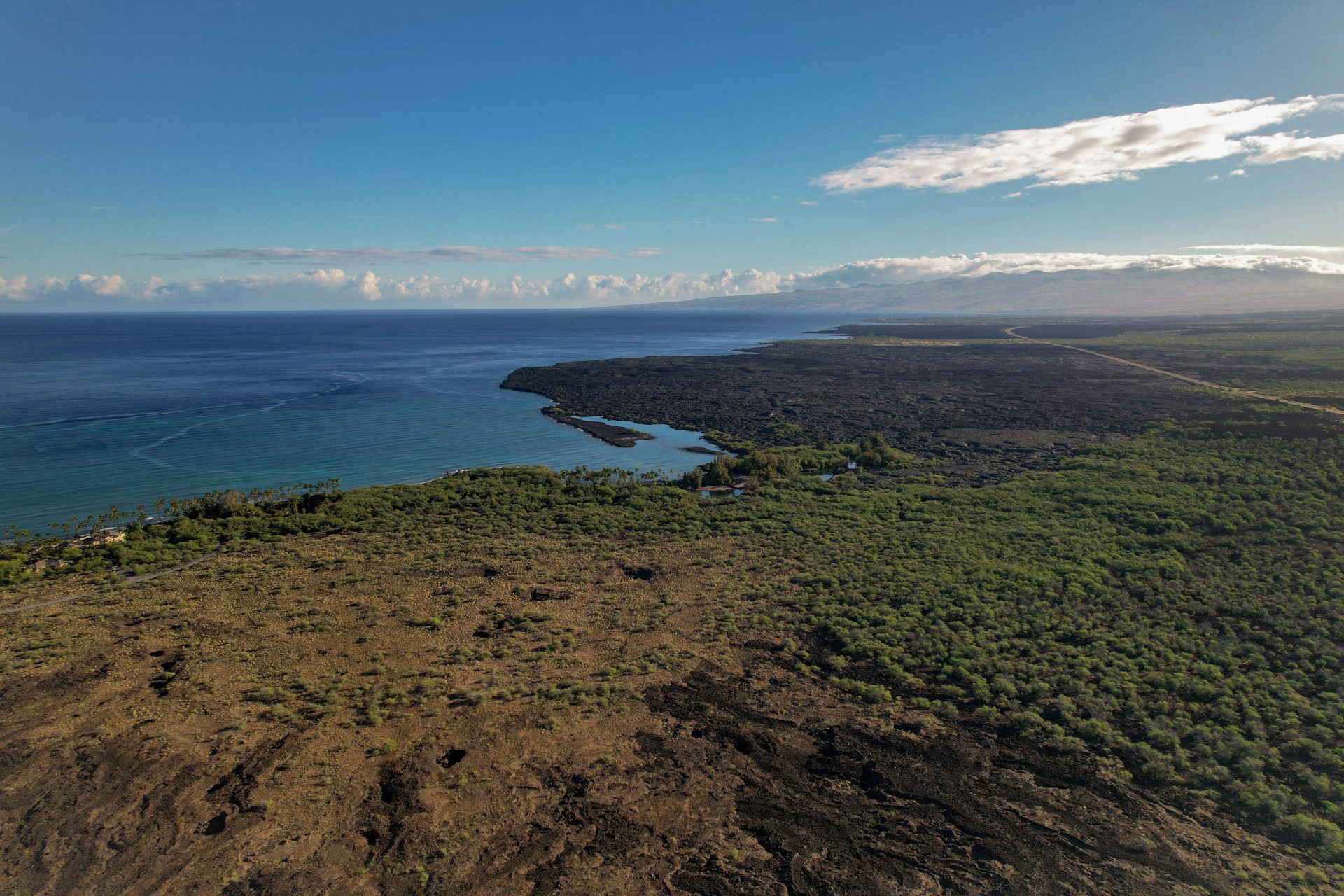
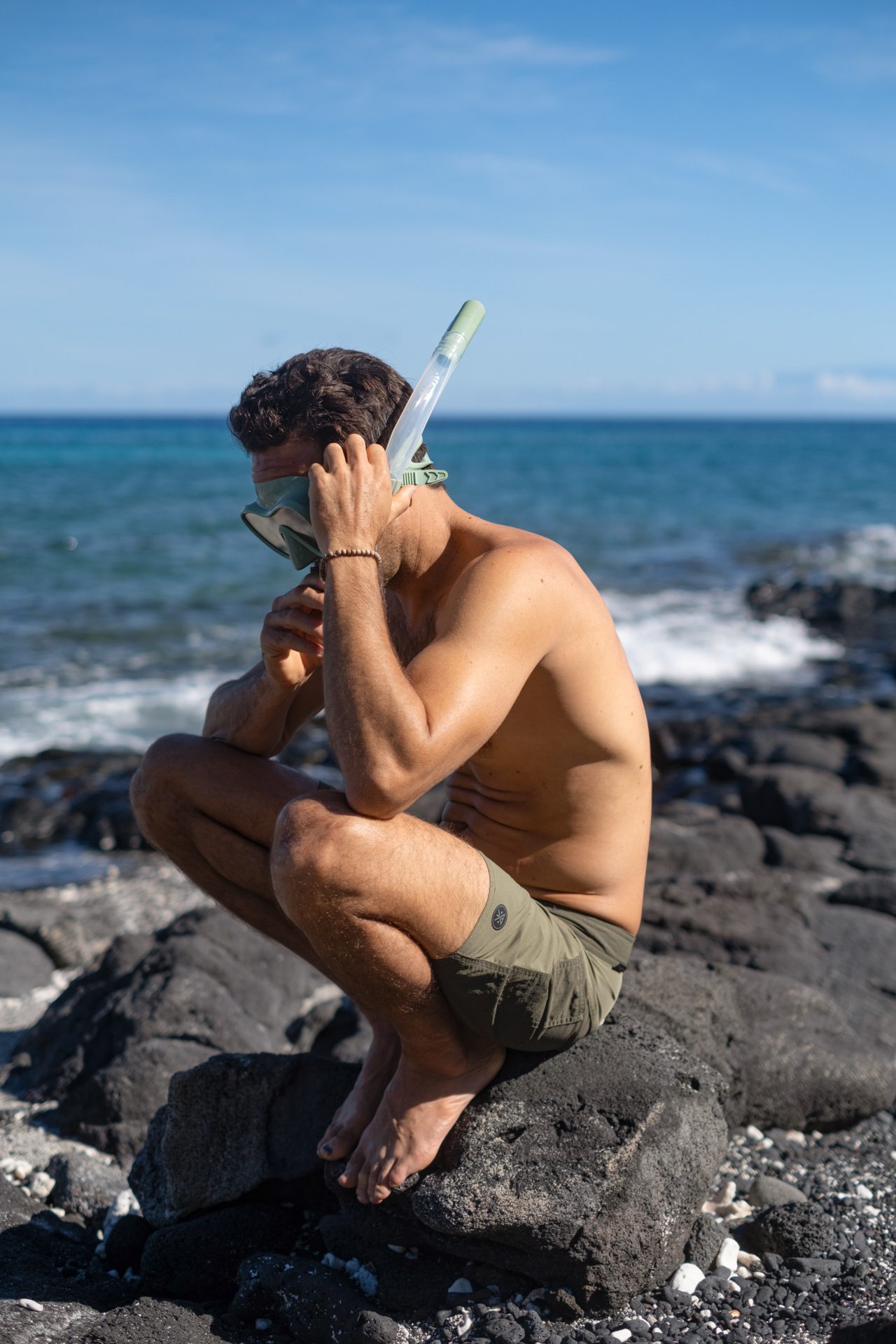
More Big Island Hikes
When speaking about the best hikes on the Big Island, there are some that will consistently come to the top. We’ve mentioned the above because we believe they’re
Akaka Falls State Park
Akaka Falls State Park, nestled in the lush northeastern Hamakua Coast of the Big Island of Hawaii near Hilo, offers a scenic, family-friendly hike that leads to one of the island’s most spectacular waterfalls. The park’s well-maintained loop trail, just under a half-mile long, meanders through a verdant rainforest teeming with wild orchids, bamboo groves, and draping ferns, culminating in breathtaking views of the 442-foot Akaka Falls. This majestic waterfall plunges into a gorge below, creating a mesmerizing spectacle for visitors. While the path is relatively easy and accessible to hikers of all levels, guests are encouraged to wear comfortable shoes and bring rain gear, as the area’s frequent showers contribute to the lush landscape and vibrant ecosystem. Google Map
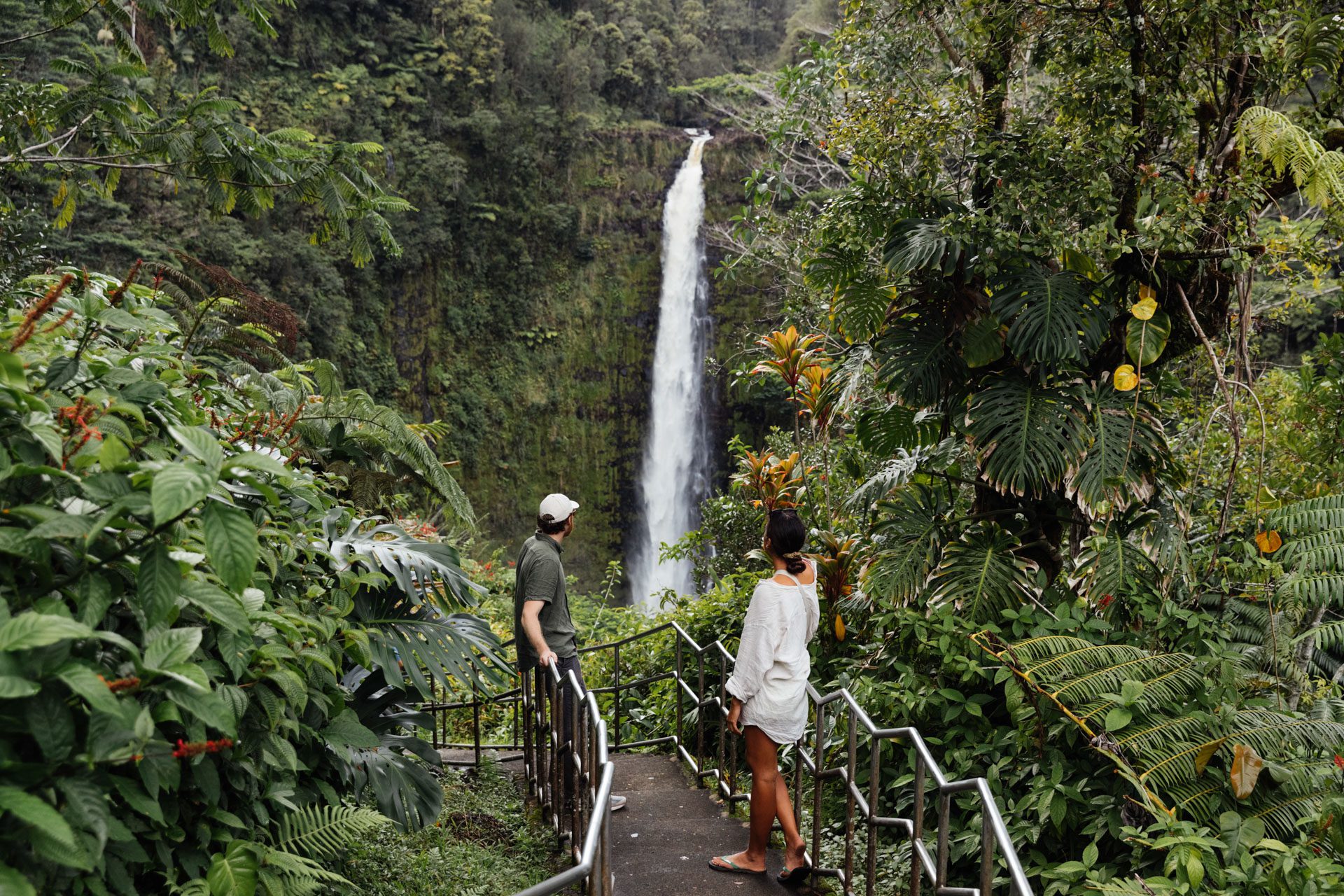
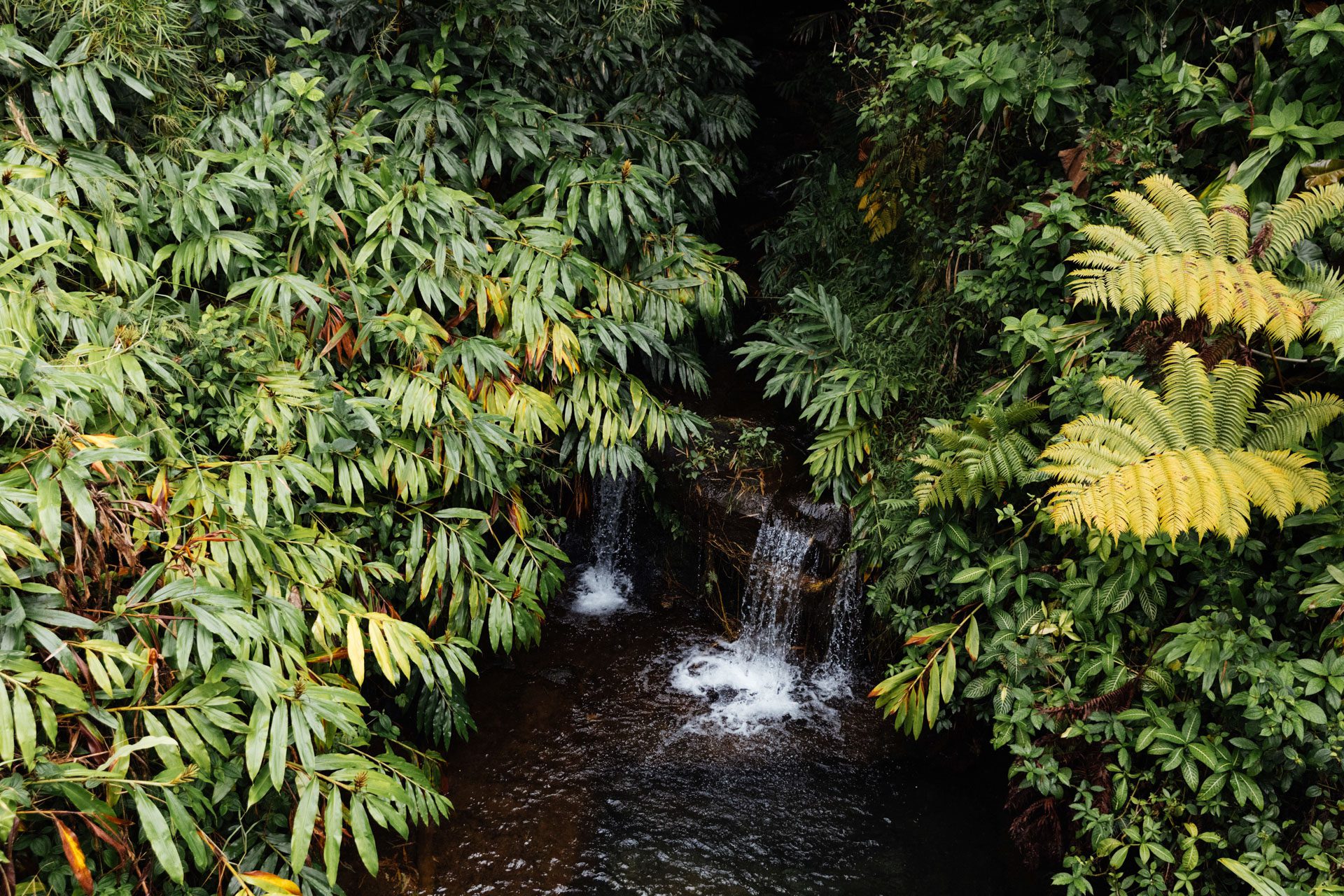
Mauna Kea
Mauna Kea, standing as the highest peak in Hawaii, Mauna Kea is much more than just a popular hiking destination; it is a sacred site deeply rooted in Hawaiian culture and history. The summit is home to the world’s most advanced astronomical observatories, owing to its clear skies. However, this has also led to controversies around land use and cultural respect. We encourage visitors to approach Mauna Kea with reverence, acknowledging its significance to native Hawaiian people. It’s important to educate yourself on the proper protocols for visitation, including participating in a cultural briefing if possible, and to strictly follow designated paths to minimize ecological impact.
If you do decide to visit Mauna Kea, note that a 4×4 vehicle is strictly required to reach the top Observatory area at the top. From the Big Island’s Saddle Road all cars regardless of 4×4 can reach the Mauna Kea State Recreation Area, a small pullout and rest area about half way up the mountain where the paved road ends. Everyone is required to stop here regardless in order to acclimate to the altitude prior to ascending further. From there, you can easily access our recommended trail, should you want to traverse on foot, the Mauna Kea Mauna Kea Visitor Center Sunset Hill Trail. At 6,500 feet above sea level, this 1.2 mile there and back trail, will take you to an overlook with incredible views of both Mauna Loa and Mauna Kea volcanoes. Google Map
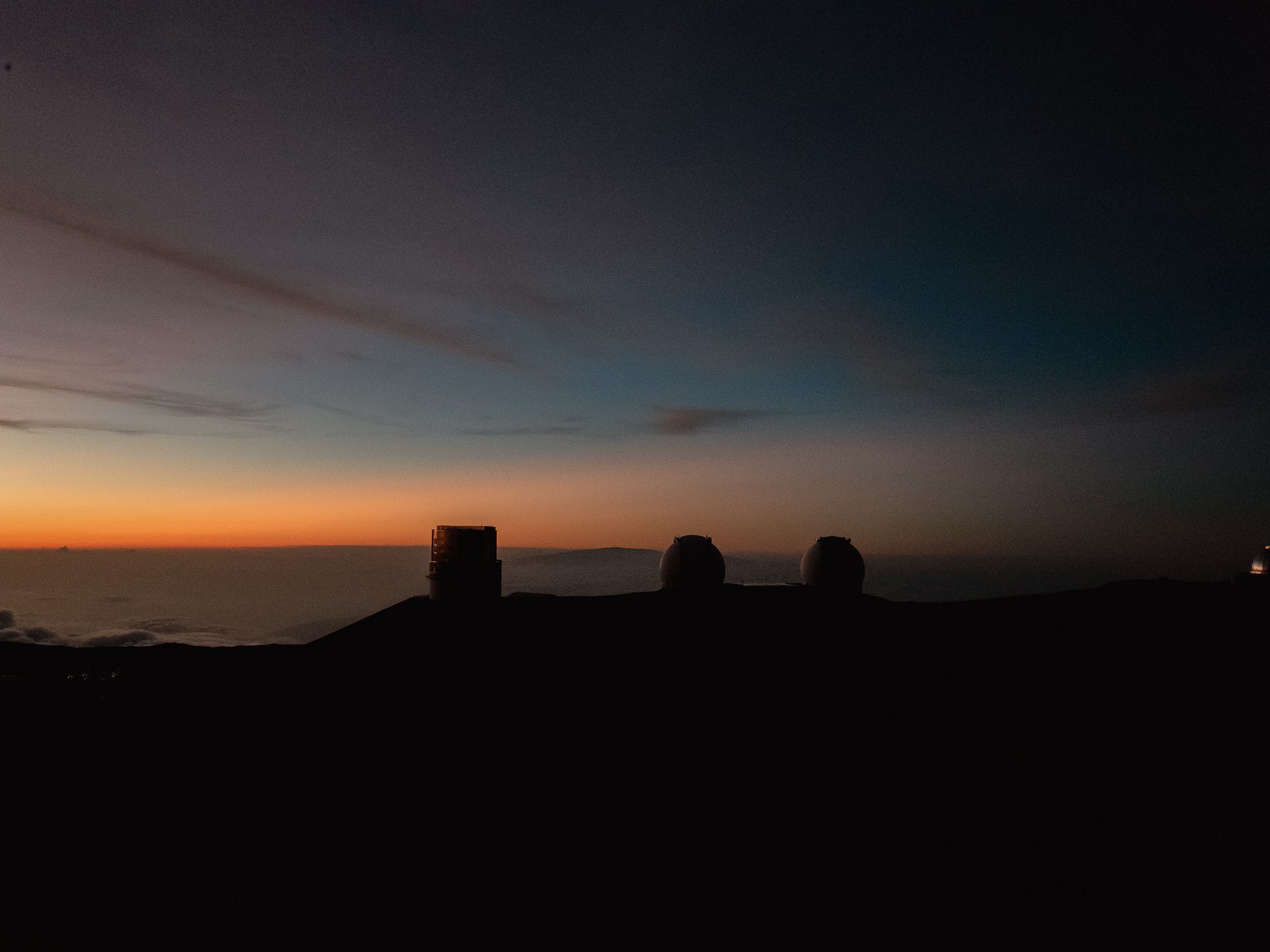
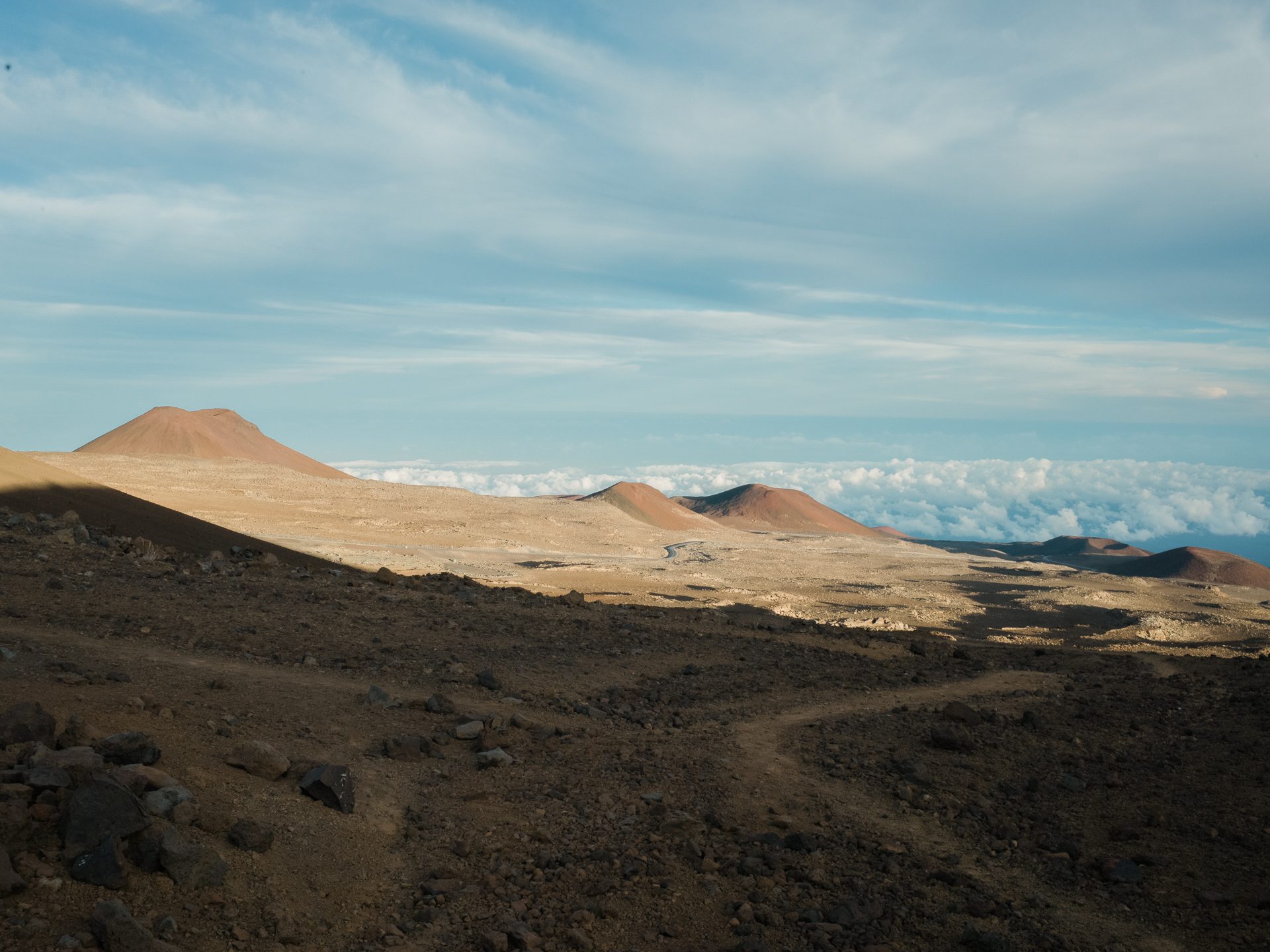
Pololu Valley
The breathtaking Pololu Valley (correctly written Pololū Valley), with its dramatic cliffs and lush landscape, offers stunning views and a glimpse into Hawaii’s untouched beauty. However, its ecosystem is fragile, and the valley holds a special place in the hearts of the local community. To preserve its beauty and cultural importance, hikers are asked to respect the land by staying on marked trails, not disturbing native plants or wildlife, and packing out all trash. The journey to Pololū Valley is not just about enjoying its scenic views but also about understanding the responsibility that comes with visiting such a pristine natural area.
While just a short hike down, it is steep and unstable. Should you decide to descend into Pololu Valley, we really only recommend this for sure footed, in-shape hikers. Of course, you’ll see an array of visitors on the trail, but this inexperience leads to almost weekly rescue efforts required to bring up exhausted hikers from the elevation gain coming back up or those that get swept to sea in the strong currents of the bay. Regardless, please listen to local volunteers advising on when it’s okay and safe to hike down to Pololu Valley, paying attention to the Big Island weather and current conditions that can change quickly.
Google Map
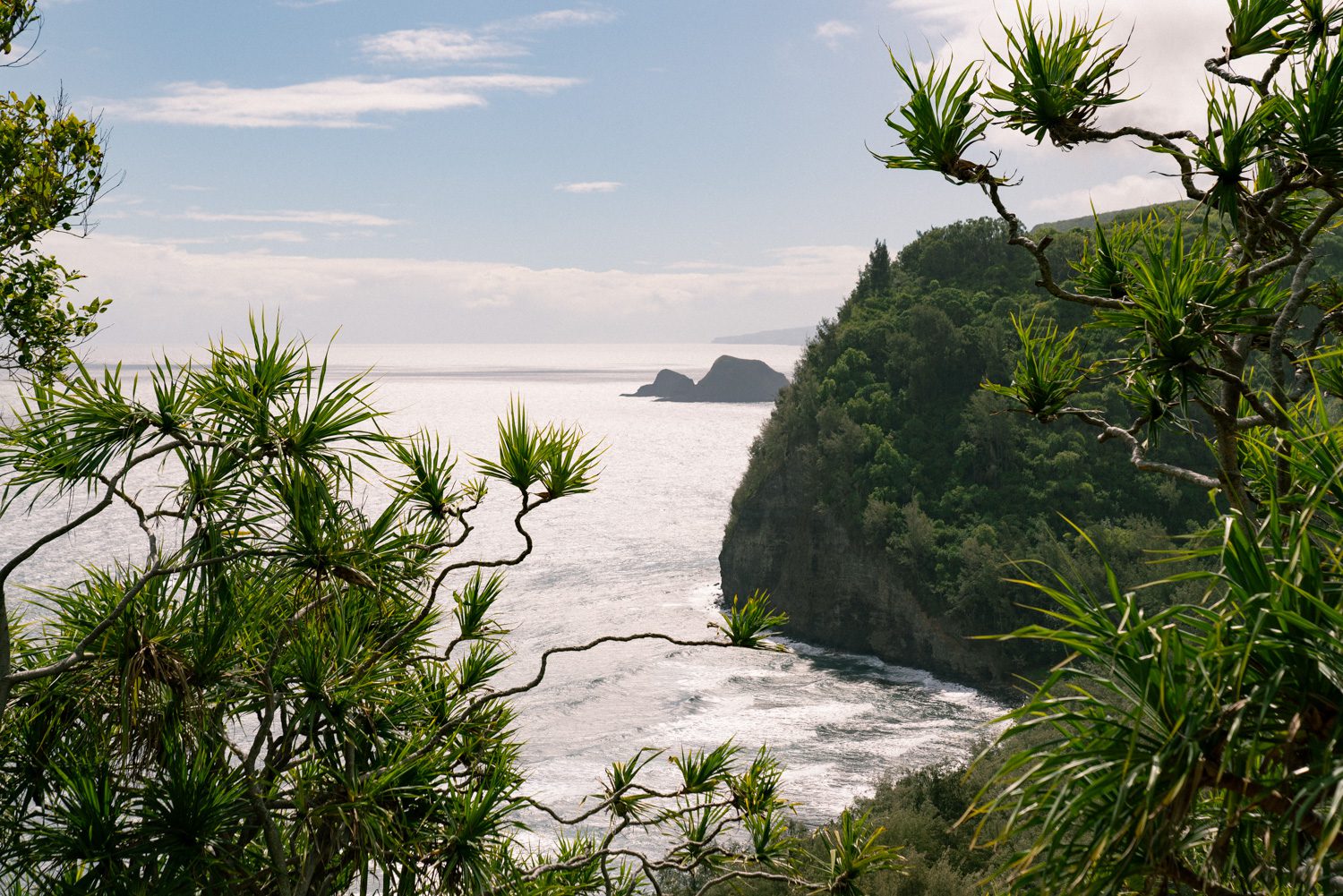
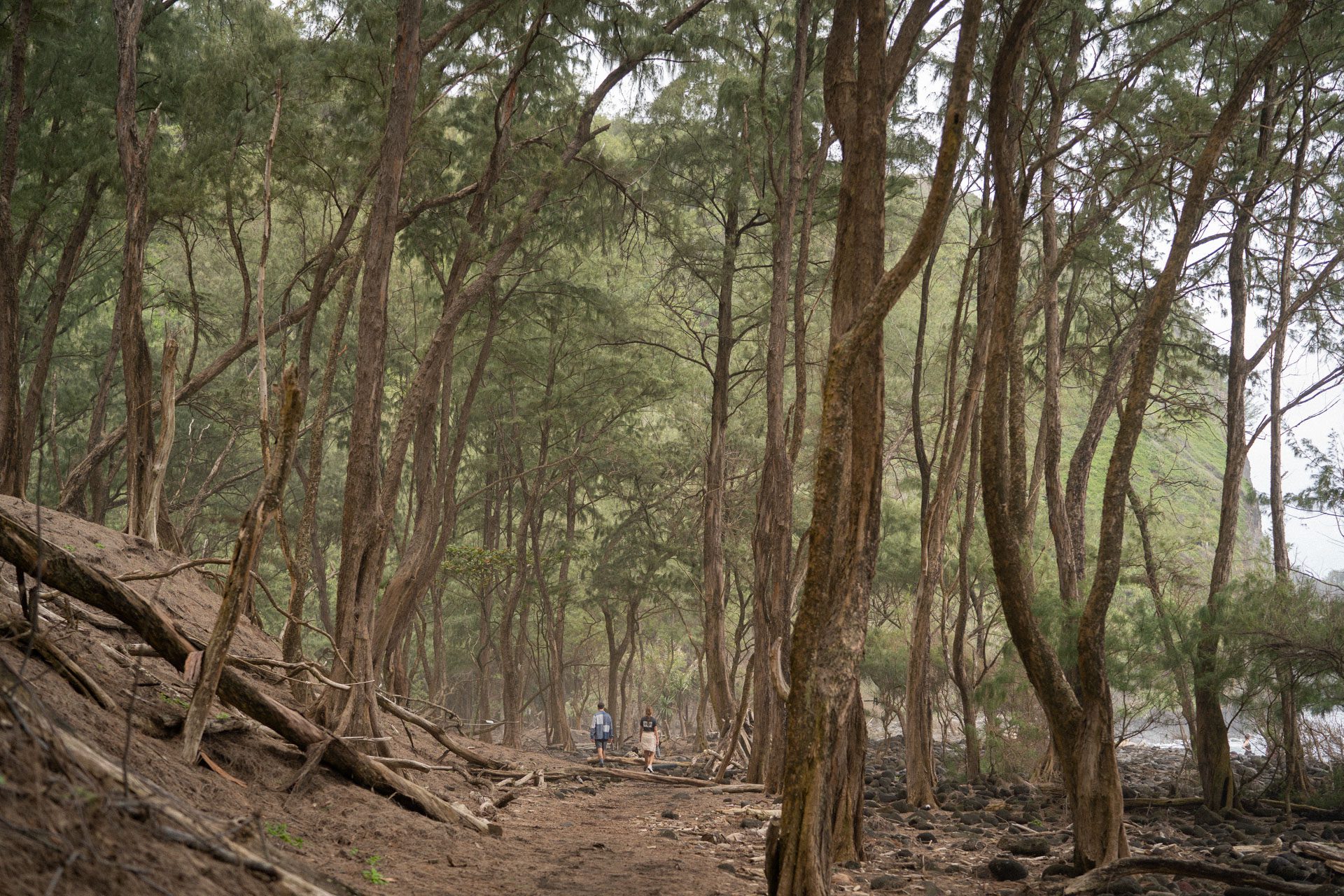
Waipio Valley
Waipio Valley (correctly written Waipiʻo Valley), known as the “Valley of the Kings,” is rich in history, cultural significance, and breathtaking natural beauty, with its towering cliffs, vibrant taro fields, and the powerful Hi’ilawe Falls. This sacred valley is a living cultural landscape, where traditional Hawaiian ways of life are still practiced. Access to the valley floor is restricted to protect its delicate ecosystem and the privacy of its residents. The road to Waipio Valley is known for its steep grade, dropping 800 feet in just one mile, making it one of the steepest roads in the United States, accessible only to four-wheel drive vehicles due to its challenging and dangerous conditions. Visitors are encouraged to view the valley from the lookout, respecting the significance of the land and the community’s efforts to preserve their heritage and the valley’s natural resources. Google Map
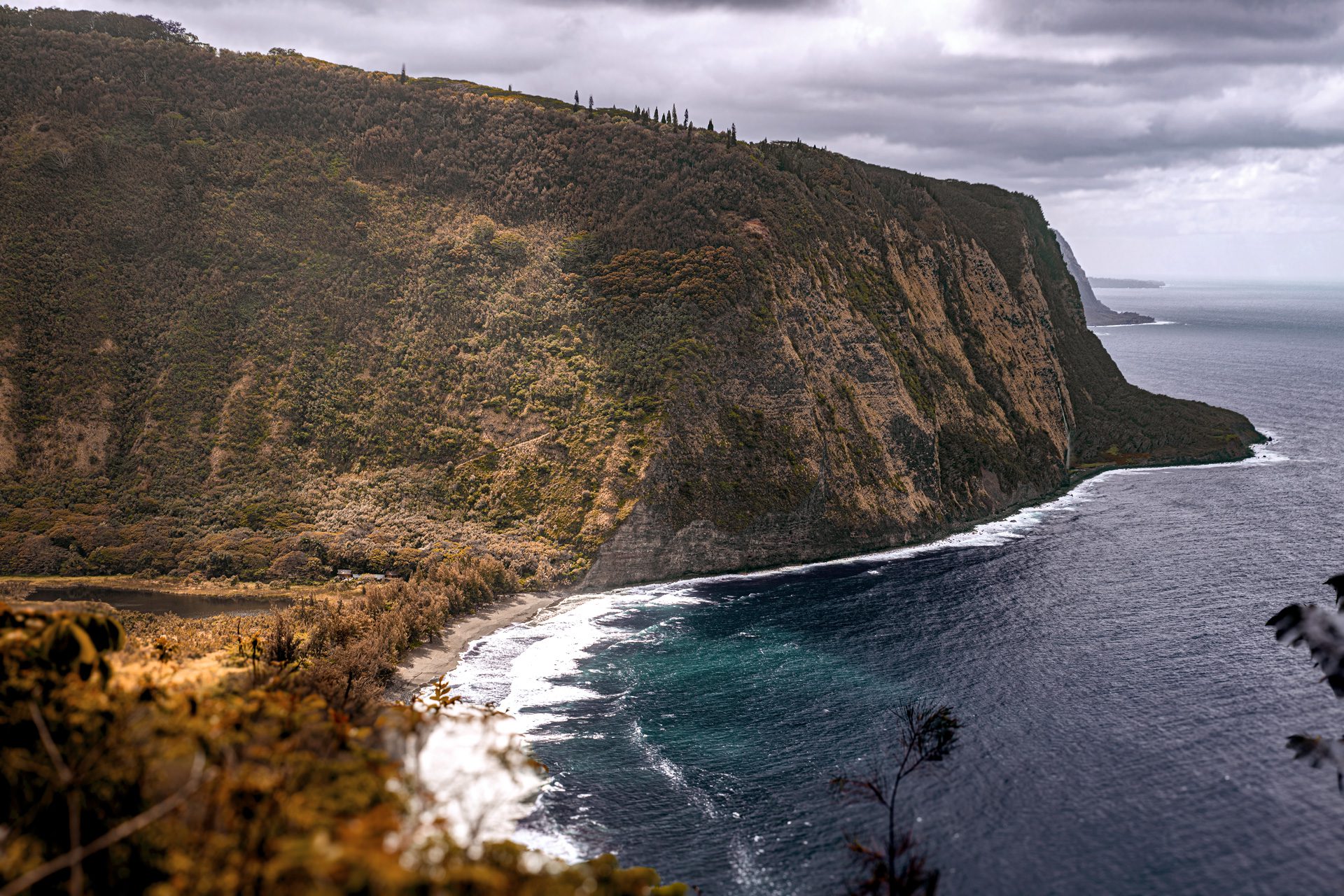
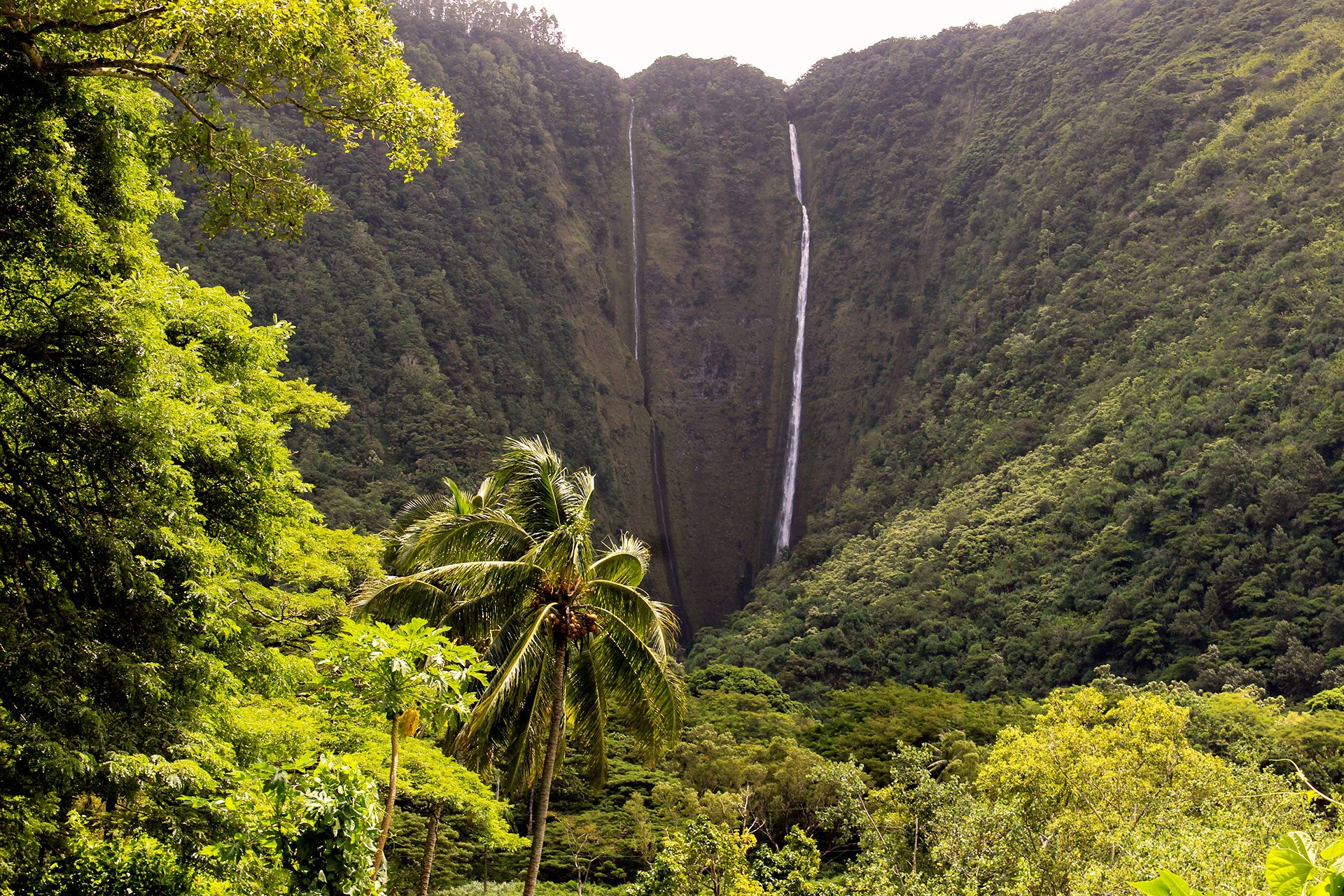
Waimanu Valley
Waimanu Valley is located on the northern coast of the Big Island of Hawaii, just west of the more famous Waipiʻo Valley. It is part of the Hamakua Coast and is accessible only by a challenging hike from Waipiʻo Valley, known as the Muliwai Trail. The trail crosses over numerous steep switchbacks and ridges, making it a strenuous trek reserved for experienced hikers. Waimanu Valley offers pristine wilderness, stunning waterfalls, including Waihilau Falls, one of the tallest in Hawaii, and remote camping spots for those looking to immerse themselves in the beauty of Hawaii’s natural landscape. Google Map
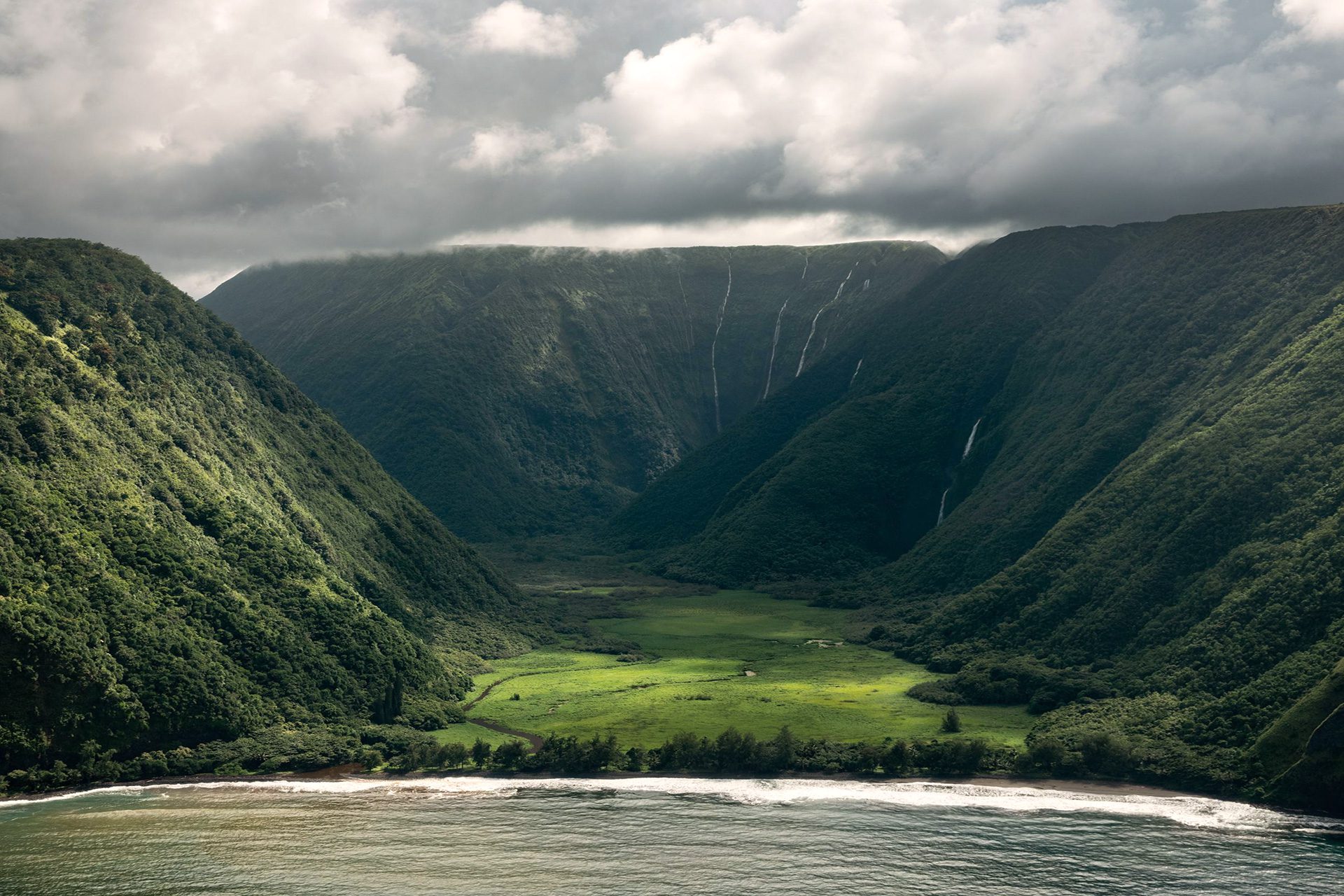
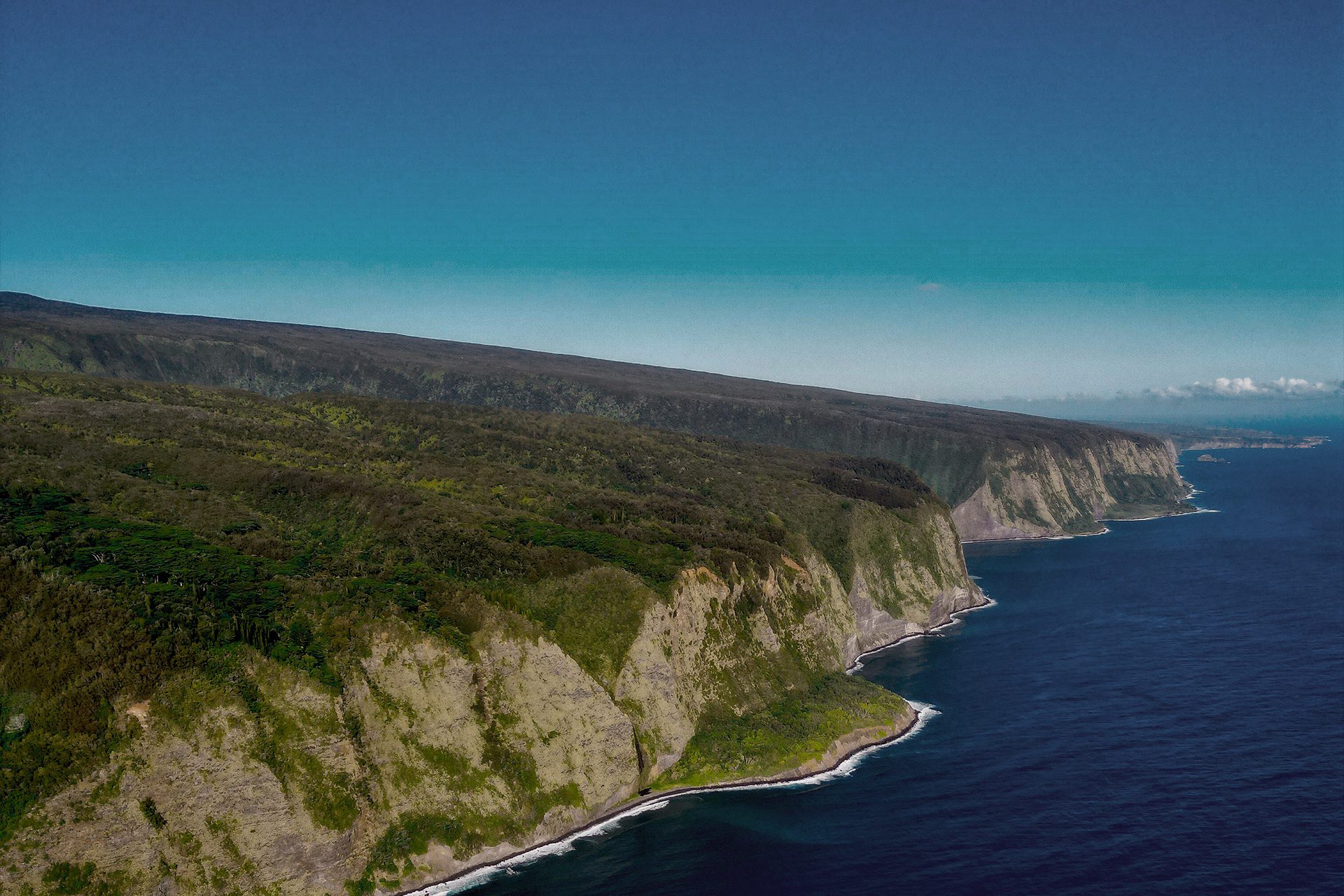
Looking for inspiration for your next island adventure? Leave your email address below, and we’ll share the best of Hawaii with you, like curated destination guides, special offers, and upcoming events.

